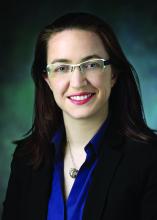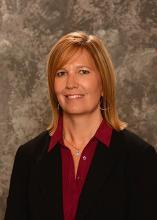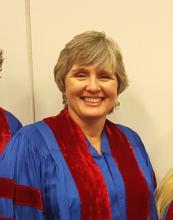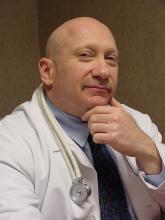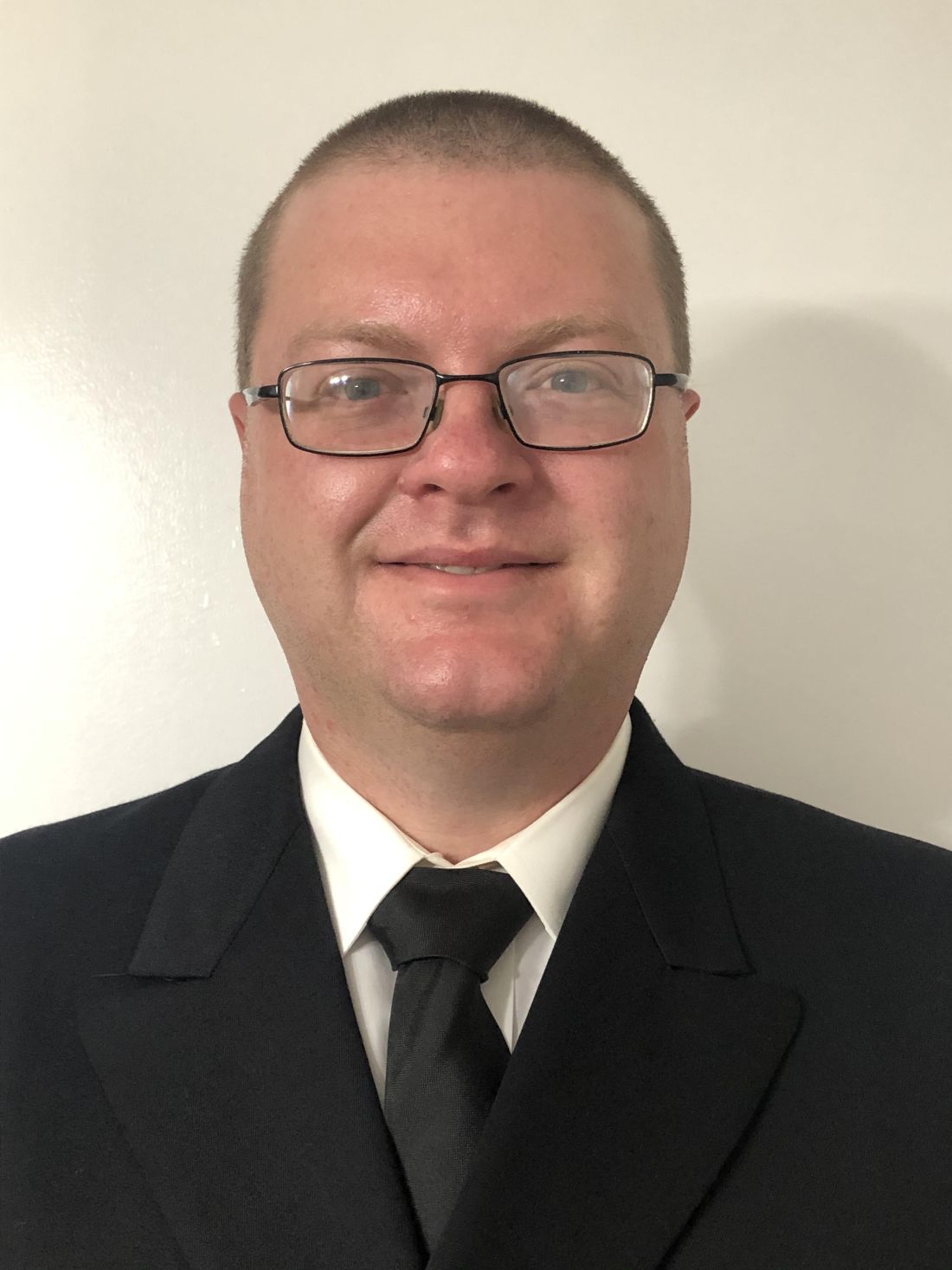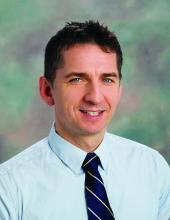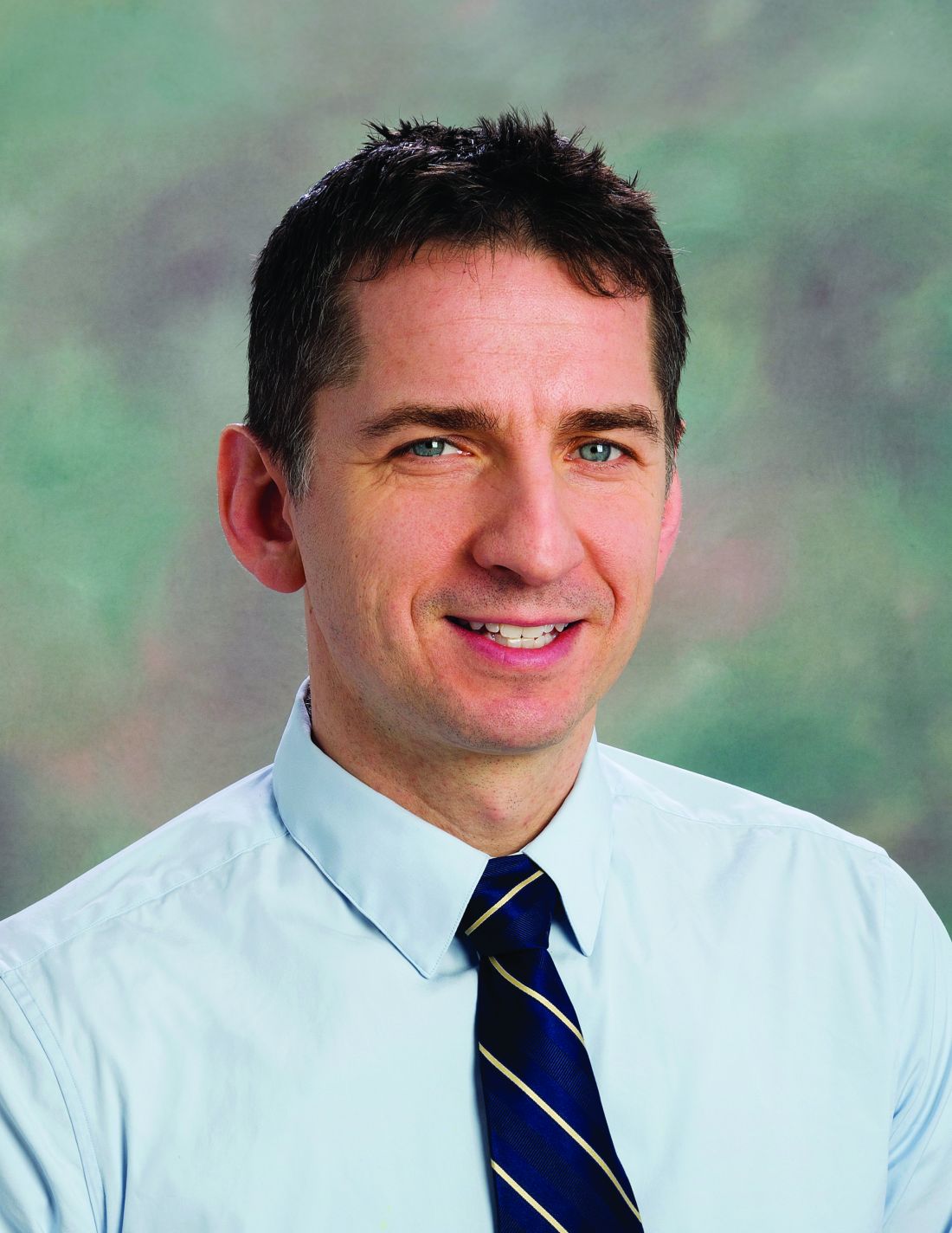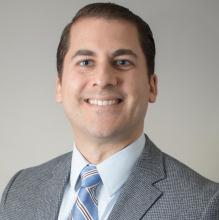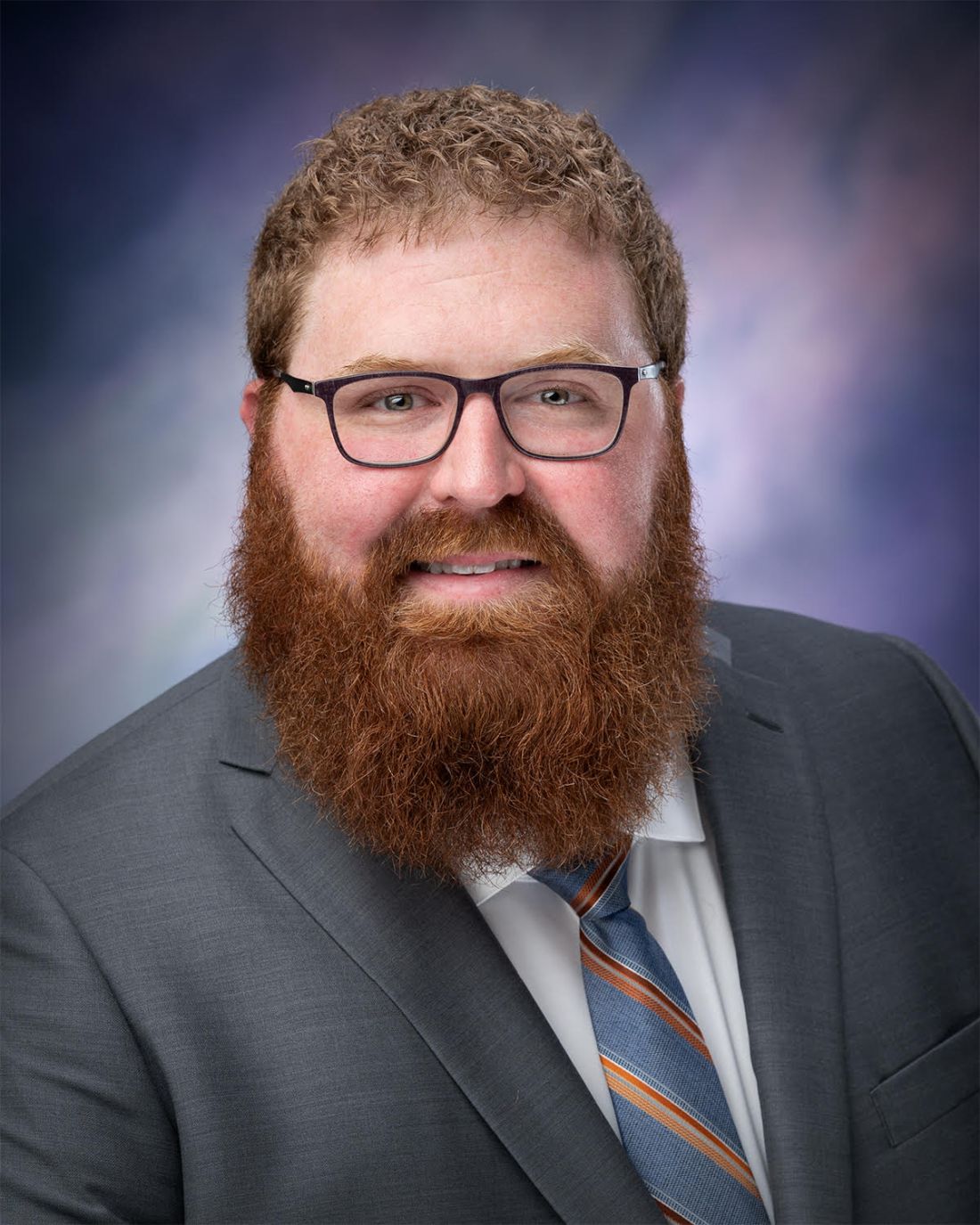User login
Destruction in the air; Empathy in the ICU; Respiratory therapist shortage; COPD and sleep disordered breathing; And more....
Occupational and environmental health
Destruction in the air
Building collapse, such as that of the Surfside condominiums in Miami, Florida, results not only in tragic loss of life but also leads to devastating effects on lung health. Following the World Trade Center collapse, a massive particle dust cloud of up to 11,000 tons of PM2.5 was dispersed, 90% of which was particles greater than 10 mcm (Rom et al. Proc Am Thorac Soc. 2010 May;7[2]:142-5).
Fine particulate matter has been associated with multiple lung conditions. Those who arrive on site in the first 24 hours may have immediate changes in FEV1 and FVC. Acute eosinophilic pneumonia has also been described in the initial aftermath (Rom et al. Am J Respir Crit Care Med. 2002;166(6):785).
Chronic lung diseases such as chronic obstructive pulmonary disease and asthma, may worsen with repeated exposure. One Swedish study demonstrated an increased incidence of chronic lower respiratory disease in cement and demolition workers compared with the general labor force (Purdue et al. Thorax. 2007 Jan;62[1]:51-6). Clean-up sites may contain a variety of materials associated with occupational lung diseases, like chrysolite asbestos, silica, and heavy metals.
Prevention remains key. In the United States, the Occupational Safety and Health Administration requires all construction and demolition sites to have a dust control plan. Primary prevention includes the use of N-95 masks and watering sites. N-95 masks protect against particulate matter PM2.5 and smaller (Zhou et al. J Thorac Dis. 2018 Mar;10[3]:2059-69. Watering sites, while useful, can be challenging depending on the size and temperature of the area. Workers in high-risk occupations should have prior screening with pulmonary function testing. After an exposure, it is recommended pulmonary function testing be repeated, with close interval monitoring.
Disclaimer: The views expressed in this article are those of the author(s) and do not reflect the official policy of the Department of Army/Navy/Air Force, Department of Defense, or U.S. Government.
Tyler Church, DO
Jason Unger, MD
Fellow-in-training Members
Bathmapriya Balakrishnan, MD
Steering Committee Member
Palliative care and end of life
Empathy in the ICU
The importance of empathetic patient care has never seemed so significant with patients isolated from the standard support systems in a pandemic that has pushed health care to its limits. While empathy can clearly impact patient outcomes (Rakel DP et al. Fam Med. 2009;41[7]:494-501), the practicality of delivering empathic care is less well defined. Into this void step Dr. Jessica Bunin and colleagues (Bunin J et al. J Crit Care. 2021;29;65:156-63), who present a scoping review of the limited literature in an effort to address gaps in the practice of empathy. Perhaps unsurprising but most critically, the authors found that far from being a dichotomous construct, empathy is a “complex phenomenon” that exists on a continuum. It is inconsistently defined in the existing literature, with the inclusion of cognitive, affective, and somatic processes variable. Equally important, they identified that practicing empathy carries risk in addition to its beneficial applications for both patients and intensivists.
Far from being easily identifiable, measured, and taught, this concept of empathy as a nuanced and contextually charged skill that requires practice and reflection aligns it with other skills and tools used in the care of our critically ill patients. This group has suggested that a clear definition of empathy, transparent discussion of the risks and benefits of using empathy, attention to developing environments that minimize barriers and facilitate the practice of empathy in clinical care, and the growth of educational practice to promote attention to self-care in the use of empathy will overall benefit both patient and physician well-being. At the very least, we need to allow ourselves grace to fail and learn as we strive to provide empathic care for our patients and ourselves.
Laura Johnson, MD, FCCP
NetWork Ex-Officio
Respiratory care network
National campaign to address respiratory therapist shortage
As our population grows, hospitals and physician practices face a rapidly growing need for more specialized, high-quality respiratory care; but the numbers of respiratory therapists are not keeping pace. (U.S. Bureau of Labor Statistics. Occupational Outlook Handbook. Respiratory Therapists).
To inspire a new generation of respiratory therapists and promote this lifesaving profession, the American Association for Respiratory Care (AARC), the Commission on Accreditation for Respiratory Care (CoARC), and The National Board for Respiratory Care (NBRC) are pursuing a multiyear, national campaign called The World Needs More RTs. This campaign has three primary goals:
1. Enhance the value of the respiratory care profession.
2. Recruit and retain more respiratory therapists.
3. Shape future leadership in respiratory care.
There are factors behind the current and impending future inadequate numbers of respiratory therapists:
- Decrease in undergraduate enrollment.
- Increase in retirements.
- Escalation of burnout in health care.
This campaign aims to address these factors, enhance interest in the profession, and prevent further decline in RT numbers.
Respiratory therapists make an invaluable impact on patient care, and simply put, the world needs more RTs. More RTs are needed to provide lifesaving care in the critical care units, emergency departments, and clinics (Shaw RC, Benavente JL. AARC Human Resources Survey of Acute Care Hospital Employers. NBRC 2020). More RTs are needed to educate the next RT generation (Shaw RC, Benavente JL. AARC Human Resources Survey of Education Programs. NBRC 2020). To see how you can champion the campaign, visit MoreRTs.com.
Lori Tinkler, MBA
CEO, NBRC
Steering Committee Member
De De Gardner, DrPH, RRT, FCCP
Vice-Chair
Sleep disorders
COPD and sleep-disordered breathing: Updates and steps forward
The presence of sleep breathing disorders in individuals with COPD, in the form of COPD and OSA overlap syndrome (OVS) or chronic hypercarbic respiratory failure (CHRF), portend poor outcomes when untreated. Treatment of OVS and CHRF are among few interventions that positively impact mortality, readmission rates, and quality of life in patients with COPD.
Higher mortality and readmission rates are seen in those admitted with COPD exacerbations who have OVS compared with COPD alone. Initiation and adherence to PAP therapy decreases mortality and COPD-related hospitalizations (Ioachimescu OC et al. J Clin Sleep Med. 2020;16[2]:267-77; Singh G et al. Sleep Breath. 2019;23[1]:193).
In CHRF, initiation of high intensity noninvasive ventilation (NIV) at least 2 weeks after resolution of acute respiratory failure reduces mortality and prolongs time to readmission (Murphy PB et al. JAMA. 2017;317[21]:2177-86; Kohnlein T et al. Lancet Respir Med. 2014;2:698-705). Initiating home NIV in individuals with acute hypercarbic respiratory failure does not improve readmission rates or time to readmission (Struik FM et al. Thorax. 2014;69:826-34). The new ATS guidelines, therefore, recommend NIV initiation for stable CHRF in COPD, screening for OVS prior to NIV initiation, and targeting PaCO2 normalization (Macrea M et al. Am J Respir Crit Care Med. 2020;202[4]:e74-e87).
Identification and treatment of OVS and CHRF pose unique challenges for clinicians, particularly when navigating current testing and reimbursement guidelines. A multisociety Technical Expert Panel, including members of CHEST, has recently published its recommendations for changes to CMS national coverage determinations for NIV to take the next steps forward (Gay PC et al. Chest. 2021;S0012-3692[21]01481-1).
Megan Lowery, MD
Sreelatha Naik, MD
Steering Committee Members
Thoracic oncology
CHEST releases its newest edition of the tobacco treatment toolkit
Tobacco remains the greatest single cause of morbidity and mortality. Left unaddressed, tobacco is projected to kill 1 billion people worldwide this century. Despite this, only 5% of all tobacco-dependent patients in the United States receive both a medication and even minimal counseling for their addiction.
Tobacco dependence is a severe chronic life-threatening disease. It is with this focus that CHEST released its latest iteration of the Tobacco Dependence Treatment Toolkit. This edition focuses on treating tobacco addiction as a chronic disease, titrating all seven FDA-approved medications toward tobacco abstinence, and medical practice/hospital reimbursement.
The CHEST toolkit is divided into eight sections: Motivational Interviewing, Testing/Diagnostics, Treatment Basics (pharmacologic and nonpharmacologic), Treatment Pearls, Clinical Vignettes and Studies, Special Populations, Treatment for e-Cigarettes and Other Tobacco Products, and Insurance Billing and Telehealth.
Special attention is given to tobacco addiction diagnostics and using these findings to treat the chronic disease of tobacco addiction just like any other chronic disease by aggressively and successfully titrating FDA-approved medications in various permutations and combinations, as needed. The therapeutic goal is assisting the patient to feel normal, minimizing withdrawal throughout the process, so that tobacco abstinence can ultimately be obtained and maintained.
Clinicians and medical centers can receive insurance reimbursement for these diagnostics and associated interventions. This includes both in-office procedures and via telehealth. The CHEST toolkit discusses both in-depth.
A new unique associated feature is our Clinician Interactive Toolkit. This multimedia interactive platform reviews clinician interactions with a tobacco-dependent patient via avatars and can be found here: Clinician Interactive Toolkit.
https://foundation.chestnet.org/lung-health-a-z/smoking-and-tobacco-use/?Item=For-Clinicians
The American College of Chest Physicians’ Tobacco Treatment Toolkit can be downloaded here.
The American College of Chest Physicians’ Tobacco Treatment Toolkit project also included the development of a new video game for tobacco users. Smoke Out: Tobacco Pirates is available for download for free to all at the Apple App Store for iPhones and iPads, and at Google Play (play.google.com/store/apps/details?id=com.gforcelearning.smokeout&hl=en_US&gl=US). The game is fun, the theme is immersive, and the educational content is specifically focused on tobacco users, although clinicians will enjoy it too.
Matthew Bars, MS
Steering Committee Member
Occupational and environmental health
Destruction in the air
Building collapse, such as that of the Surfside condominiums in Miami, Florida, results not only in tragic loss of life but also leads to devastating effects on lung health. Following the World Trade Center collapse, a massive particle dust cloud of up to 11,000 tons of PM2.5 was dispersed, 90% of which was particles greater than 10 mcm (Rom et al. Proc Am Thorac Soc. 2010 May;7[2]:142-5).
Fine particulate matter has been associated with multiple lung conditions. Those who arrive on site in the first 24 hours may have immediate changes in FEV1 and FVC. Acute eosinophilic pneumonia has also been described in the initial aftermath (Rom et al. Am J Respir Crit Care Med. 2002;166(6):785).
Chronic lung diseases such as chronic obstructive pulmonary disease and asthma, may worsen with repeated exposure. One Swedish study demonstrated an increased incidence of chronic lower respiratory disease in cement and demolition workers compared with the general labor force (Purdue et al. Thorax. 2007 Jan;62[1]:51-6). Clean-up sites may contain a variety of materials associated with occupational lung diseases, like chrysolite asbestos, silica, and heavy metals.
Prevention remains key. In the United States, the Occupational Safety and Health Administration requires all construction and demolition sites to have a dust control plan. Primary prevention includes the use of N-95 masks and watering sites. N-95 masks protect against particulate matter PM2.5 and smaller (Zhou et al. J Thorac Dis. 2018 Mar;10[3]:2059-69. Watering sites, while useful, can be challenging depending on the size and temperature of the area. Workers in high-risk occupations should have prior screening with pulmonary function testing. After an exposure, it is recommended pulmonary function testing be repeated, with close interval monitoring.
Disclaimer: The views expressed in this article are those of the author(s) and do not reflect the official policy of the Department of Army/Navy/Air Force, Department of Defense, or U.S. Government.
Tyler Church, DO
Jason Unger, MD
Fellow-in-training Members
Bathmapriya Balakrishnan, MD
Steering Committee Member
Palliative care and end of life
Empathy in the ICU
The importance of empathetic patient care has never seemed so significant with patients isolated from the standard support systems in a pandemic that has pushed health care to its limits. While empathy can clearly impact patient outcomes (Rakel DP et al. Fam Med. 2009;41[7]:494-501), the practicality of delivering empathic care is less well defined. Into this void step Dr. Jessica Bunin and colleagues (Bunin J et al. J Crit Care. 2021;29;65:156-63), who present a scoping review of the limited literature in an effort to address gaps in the practice of empathy. Perhaps unsurprising but most critically, the authors found that far from being a dichotomous construct, empathy is a “complex phenomenon” that exists on a continuum. It is inconsistently defined in the existing literature, with the inclusion of cognitive, affective, and somatic processes variable. Equally important, they identified that practicing empathy carries risk in addition to its beneficial applications for both patients and intensivists.
Far from being easily identifiable, measured, and taught, this concept of empathy as a nuanced and contextually charged skill that requires practice and reflection aligns it with other skills and tools used in the care of our critically ill patients. This group has suggested that a clear definition of empathy, transparent discussion of the risks and benefits of using empathy, attention to developing environments that minimize barriers and facilitate the practice of empathy in clinical care, and the growth of educational practice to promote attention to self-care in the use of empathy will overall benefit both patient and physician well-being. At the very least, we need to allow ourselves grace to fail and learn as we strive to provide empathic care for our patients and ourselves.
Laura Johnson, MD, FCCP
NetWork Ex-Officio
Respiratory care network
National campaign to address respiratory therapist shortage
As our population grows, hospitals and physician practices face a rapidly growing need for more specialized, high-quality respiratory care; but the numbers of respiratory therapists are not keeping pace. (U.S. Bureau of Labor Statistics. Occupational Outlook Handbook. Respiratory Therapists).
To inspire a new generation of respiratory therapists and promote this lifesaving profession, the American Association for Respiratory Care (AARC), the Commission on Accreditation for Respiratory Care (CoARC), and The National Board for Respiratory Care (NBRC) are pursuing a multiyear, national campaign called The World Needs More RTs. This campaign has three primary goals:
1. Enhance the value of the respiratory care profession.
2. Recruit and retain more respiratory therapists.
3. Shape future leadership in respiratory care.
There are factors behind the current and impending future inadequate numbers of respiratory therapists:
- Decrease in undergraduate enrollment.
- Increase in retirements.
- Escalation of burnout in health care.
This campaign aims to address these factors, enhance interest in the profession, and prevent further decline in RT numbers.
Respiratory therapists make an invaluable impact on patient care, and simply put, the world needs more RTs. More RTs are needed to provide lifesaving care in the critical care units, emergency departments, and clinics (Shaw RC, Benavente JL. AARC Human Resources Survey of Acute Care Hospital Employers. NBRC 2020). More RTs are needed to educate the next RT generation (Shaw RC, Benavente JL. AARC Human Resources Survey of Education Programs. NBRC 2020). To see how you can champion the campaign, visit MoreRTs.com.
Lori Tinkler, MBA
CEO, NBRC
Steering Committee Member
De De Gardner, DrPH, RRT, FCCP
Vice-Chair
Sleep disorders
COPD and sleep-disordered breathing: Updates and steps forward
The presence of sleep breathing disorders in individuals with COPD, in the form of COPD and OSA overlap syndrome (OVS) or chronic hypercarbic respiratory failure (CHRF), portend poor outcomes when untreated. Treatment of OVS and CHRF are among few interventions that positively impact mortality, readmission rates, and quality of life in patients with COPD.
Higher mortality and readmission rates are seen in those admitted with COPD exacerbations who have OVS compared with COPD alone. Initiation and adherence to PAP therapy decreases mortality and COPD-related hospitalizations (Ioachimescu OC et al. J Clin Sleep Med. 2020;16[2]:267-77; Singh G et al. Sleep Breath. 2019;23[1]:193).
In CHRF, initiation of high intensity noninvasive ventilation (NIV) at least 2 weeks after resolution of acute respiratory failure reduces mortality and prolongs time to readmission (Murphy PB et al. JAMA. 2017;317[21]:2177-86; Kohnlein T et al. Lancet Respir Med. 2014;2:698-705). Initiating home NIV in individuals with acute hypercarbic respiratory failure does not improve readmission rates or time to readmission (Struik FM et al. Thorax. 2014;69:826-34). The new ATS guidelines, therefore, recommend NIV initiation for stable CHRF in COPD, screening for OVS prior to NIV initiation, and targeting PaCO2 normalization (Macrea M et al. Am J Respir Crit Care Med. 2020;202[4]:e74-e87).
Identification and treatment of OVS and CHRF pose unique challenges for clinicians, particularly when navigating current testing and reimbursement guidelines. A multisociety Technical Expert Panel, including members of CHEST, has recently published its recommendations for changes to CMS national coverage determinations for NIV to take the next steps forward (Gay PC et al. Chest. 2021;S0012-3692[21]01481-1).
Megan Lowery, MD
Sreelatha Naik, MD
Steering Committee Members
Thoracic oncology
CHEST releases its newest edition of the tobacco treatment toolkit
Tobacco remains the greatest single cause of morbidity and mortality. Left unaddressed, tobacco is projected to kill 1 billion people worldwide this century. Despite this, only 5% of all tobacco-dependent patients in the United States receive both a medication and even minimal counseling for their addiction.
Tobacco dependence is a severe chronic life-threatening disease. It is with this focus that CHEST released its latest iteration of the Tobacco Dependence Treatment Toolkit. This edition focuses on treating tobacco addiction as a chronic disease, titrating all seven FDA-approved medications toward tobacco abstinence, and medical practice/hospital reimbursement.
The CHEST toolkit is divided into eight sections: Motivational Interviewing, Testing/Diagnostics, Treatment Basics (pharmacologic and nonpharmacologic), Treatment Pearls, Clinical Vignettes and Studies, Special Populations, Treatment for e-Cigarettes and Other Tobacco Products, and Insurance Billing and Telehealth.
Special attention is given to tobacco addiction diagnostics and using these findings to treat the chronic disease of tobacco addiction just like any other chronic disease by aggressively and successfully titrating FDA-approved medications in various permutations and combinations, as needed. The therapeutic goal is assisting the patient to feel normal, minimizing withdrawal throughout the process, so that tobacco abstinence can ultimately be obtained and maintained.
Clinicians and medical centers can receive insurance reimbursement for these diagnostics and associated interventions. This includes both in-office procedures and via telehealth. The CHEST toolkit discusses both in-depth.
A new unique associated feature is our Clinician Interactive Toolkit. This multimedia interactive platform reviews clinician interactions with a tobacco-dependent patient via avatars and can be found here: Clinician Interactive Toolkit.
https://foundation.chestnet.org/lung-health-a-z/smoking-and-tobacco-use/?Item=For-Clinicians
The American College of Chest Physicians’ Tobacco Treatment Toolkit can be downloaded here.
The American College of Chest Physicians’ Tobacco Treatment Toolkit project also included the development of a new video game for tobacco users. Smoke Out: Tobacco Pirates is available for download for free to all at the Apple App Store for iPhones and iPads, and at Google Play (play.google.com/store/apps/details?id=com.gforcelearning.smokeout&hl=en_US&gl=US). The game is fun, the theme is immersive, and the educational content is specifically focused on tobacco users, although clinicians will enjoy it too.
Matthew Bars, MS
Steering Committee Member
Occupational and environmental health
Destruction in the air
Building collapse, such as that of the Surfside condominiums in Miami, Florida, results not only in tragic loss of life but also leads to devastating effects on lung health. Following the World Trade Center collapse, a massive particle dust cloud of up to 11,000 tons of PM2.5 was dispersed, 90% of which was particles greater than 10 mcm (Rom et al. Proc Am Thorac Soc. 2010 May;7[2]:142-5).
Fine particulate matter has been associated with multiple lung conditions. Those who arrive on site in the first 24 hours may have immediate changes in FEV1 and FVC. Acute eosinophilic pneumonia has also been described in the initial aftermath (Rom et al. Am J Respir Crit Care Med. 2002;166(6):785).
Chronic lung diseases such as chronic obstructive pulmonary disease and asthma, may worsen with repeated exposure. One Swedish study demonstrated an increased incidence of chronic lower respiratory disease in cement and demolition workers compared with the general labor force (Purdue et al. Thorax. 2007 Jan;62[1]:51-6). Clean-up sites may contain a variety of materials associated with occupational lung diseases, like chrysolite asbestos, silica, and heavy metals.
Prevention remains key. In the United States, the Occupational Safety and Health Administration requires all construction and demolition sites to have a dust control plan. Primary prevention includes the use of N-95 masks and watering sites. N-95 masks protect against particulate matter PM2.5 and smaller (Zhou et al. J Thorac Dis. 2018 Mar;10[3]:2059-69. Watering sites, while useful, can be challenging depending on the size and temperature of the area. Workers in high-risk occupations should have prior screening with pulmonary function testing. After an exposure, it is recommended pulmonary function testing be repeated, with close interval monitoring.
Disclaimer: The views expressed in this article are those of the author(s) and do not reflect the official policy of the Department of Army/Navy/Air Force, Department of Defense, or U.S. Government.
Tyler Church, DO
Jason Unger, MD
Fellow-in-training Members
Bathmapriya Balakrishnan, MD
Steering Committee Member
Palliative care and end of life
Empathy in the ICU
The importance of empathetic patient care has never seemed so significant with patients isolated from the standard support systems in a pandemic that has pushed health care to its limits. While empathy can clearly impact patient outcomes (Rakel DP et al. Fam Med. 2009;41[7]:494-501), the practicality of delivering empathic care is less well defined. Into this void step Dr. Jessica Bunin and colleagues (Bunin J et al. J Crit Care. 2021;29;65:156-63), who present a scoping review of the limited literature in an effort to address gaps in the practice of empathy. Perhaps unsurprising but most critically, the authors found that far from being a dichotomous construct, empathy is a “complex phenomenon” that exists on a continuum. It is inconsistently defined in the existing literature, with the inclusion of cognitive, affective, and somatic processes variable. Equally important, they identified that practicing empathy carries risk in addition to its beneficial applications for both patients and intensivists.
Far from being easily identifiable, measured, and taught, this concept of empathy as a nuanced and contextually charged skill that requires practice and reflection aligns it with other skills and tools used in the care of our critically ill patients. This group has suggested that a clear definition of empathy, transparent discussion of the risks and benefits of using empathy, attention to developing environments that minimize barriers and facilitate the practice of empathy in clinical care, and the growth of educational practice to promote attention to self-care in the use of empathy will overall benefit both patient and physician well-being. At the very least, we need to allow ourselves grace to fail and learn as we strive to provide empathic care for our patients and ourselves.
Laura Johnson, MD, FCCP
NetWork Ex-Officio
Respiratory care network
National campaign to address respiratory therapist shortage
As our population grows, hospitals and physician practices face a rapidly growing need for more specialized, high-quality respiratory care; but the numbers of respiratory therapists are not keeping pace. (U.S. Bureau of Labor Statistics. Occupational Outlook Handbook. Respiratory Therapists).
To inspire a new generation of respiratory therapists and promote this lifesaving profession, the American Association for Respiratory Care (AARC), the Commission on Accreditation for Respiratory Care (CoARC), and The National Board for Respiratory Care (NBRC) are pursuing a multiyear, national campaign called The World Needs More RTs. This campaign has three primary goals:
1. Enhance the value of the respiratory care profession.
2. Recruit and retain more respiratory therapists.
3. Shape future leadership in respiratory care.
There are factors behind the current and impending future inadequate numbers of respiratory therapists:
- Decrease in undergraduate enrollment.
- Increase in retirements.
- Escalation of burnout in health care.
This campaign aims to address these factors, enhance interest in the profession, and prevent further decline in RT numbers.
Respiratory therapists make an invaluable impact on patient care, and simply put, the world needs more RTs. More RTs are needed to provide lifesaving care in the critical care units, emergency departments, and clinics (Shaw RC, Benavente JL. AARC Human Resources Survey of Acute Care Hospital Employers. NBRC 2020). More RTs are needed to educate the next RT generation (Shaw RC, Benavente JL. AARC Human Resources Survey of Education Programs. NBRC 2020). To see how you can champion the campaign, visit MoreRTs.com.
Lori Tinkler, MBA
CEO, NBRC
Steering Committee Member
De De Gardner, DrPH, RRT, FCCP
Vice-Chair
Sleep disorders
COPD and sleep-disordered breathing: Updates and steps forward
The presence of sleep breathing disorders in individuals with COPD, in the form of COPD and OSA overlap syndrome (OVS) or chronic hypercarbic respiratory failure (CHRF), portend poor outcomes when untreated. Treatment of OVS and CHRF are among few interventions that positively impact mortality, readmission rates, and quality of life in patients with COPD.
Higher mortality and readmission rates are seen in those admitted with COPD exacerbations who have OVS compared with COPD alone. Initiation and adherence to PAP therapy decreases mortality and COPD-related hospitalizations (Ioachimescu OC et al. J Clin Sleep Med. 2020;16[2]:267-77; Singh G et al. Sleep Breath. 2019;23[1]:193).
In CHRF, initiation of high intensity noninvasive ventilation (NIV) at least 2 weeks after resolution of acute respiratory failure reduces mortality and prolongs time to readmission (Murphy PB et al. JAMA. 2017;317[21]:2177-86; Kohnlein T et al. Lancet Respir Med. 2014;2:698-705). Initiating home NIV in individuals with acute hypercarbic respiratory failure does not improve readmission rates or time to readmission (Struik FM et al. Thorax. 2014;69:826-34). The new ATS guidelines, therefore, recommend NIV initiation for stable CHRF in COPD, screening for OVS prior to NIV initiation, and targeting PaCO2 normalization (Macrea M et al. Am J Respir Crit Care Med. 2020;202[4]:e74-e87).
Identification and treatment of OVS and CHRF pose unique challenges for clinicians, particularly when navigating current testing and reimbursement guidelines. A multisociety Technical Expert Panel, including members of CHEST, has recently published its recommendations for changes to CMS national coverage determinations for NIV to take the next steps forward (Gay PC et al. Chest. 2021;S0012-3692[21]01481-1).
Megan Lowery, MD
Sreelatha Naik, MD
Steering Committee Members
Thoracic oncology
CHEST releases its newest edition of the tobacco treatment toolkit
Tobacco remains the greatest single cause of morbidity and mortality. Left unaddressed, tobacco is projected to kill 1 billion people worldwide this century. Despite this, only 5% of all tobacco-dependent patients in the United States receive both a medication and even minimal counseling for their addiction.
Tobacco dependence is a severe chronic life-threatening disease. It is with this focus that CHEST released its latest iteration of the Tobacco Dependence Treatment Toolkit. This edition focuses on treating tobacco addiction as a chronic disease, titrating all seven FDA-approved medications toward tobacco abstinence, and medical practice/hospital reimbursement.
The CHEST toolkit is divided into eight sections: Motivational Interviewing, Testing/Diagnostics, Treatment Basics (pharmacologic and nonpharmacologic), Treatment Pearls, Clinical Vignettes and Studies, Special Populations, Treatment for e-Cigarettes and Other Tobacco Products, and Insurance Billing and Telehealth.
Special attention is given to tobacco addiction diagnostics and using these findings to treat the chronic disease of tobacco addiction just like any other chronic disease by aggressively and successfully titrating FDA-approved medications in various permutations and combinations, as needed. The therapeutic goal is assisting the patient to feel normal, minimizing withdrawal throughout the process, so that tobacco abstinence can ultimately be obtained and maintained.
Clinicians and medical centers can receive insurance reimbursement for these diagnostics and associated interventions. This includes both in-office procedures and via telehealth. The CHEST toolkit discusses both in-depth.
A new unique associated feature is our Clinician Interactive Toolkit. This multimedia interactive platform reviews clinician interactions with a tobacco-dependent patient via avatars and can be found here: Clinician Interactive Toolkit.
https://foundation.chestnet.org/lung-health-a-z/smoking-and-tobacco-use/?Item=For-Clinicians
The American College of Chest Physicians’ Tobacco Treatment Toolkit can be downloaded here.
The American College of Chest Physicians’ Tobacco Treatment Toolkit project also included the development of a new video game for tobacco users. Smoke Out: Tobacco Pirates is available for download for free to all at the Apple App Store for iPhones and iPads, and at Google Play (play.google.com/store/apps/details?id=com.gforcelearning.smokeout&hl=en_US&gl=US). The game is fun, the theme is immersive, and the educational content is specifically focused on tobacco users, although clinicians will enjoy it too.
Matthew Bars, MS
Steering Committee Member
This month in the journal CHEST®
Editor’s picks
Point: E-cigarettes for harm reduction in tobacco use disorder: Pro. By Dr. C. Bates.
Counterpoint: E-cigarettes for harm reduction in tobacco use disorder: Con. By Dr. H. Kathuria, et al.
Eosinophilic and non-eosinophilic asthma: an expert consensus framework to characterize phenotypes in a global real-life severe asthma cohort. By Dr. L. G. Heaney, et al.Symptoms of mental health disorders in critical care clinicians facing the COVID-19 second wave: A cross-sectional study. By Dr. E. Azoulay, et al.Tobacco smoking and risk for pulmonary fibrosis: A prospective cohort study in UK Biobank.By Dr. V. Bellow, et al.Sleep in the hospitalized child: A contemporary review. By Dr. J. Berger, et al.Avoid the Trap: Non-expanding Lung. By Dr. D. Gillett, et al.Resuscitation a la Carte: Ethical concerns about the practice and theory of partial codes. By Dr. B. Gremmels, et al.
Editor’s picks
Editor’s picks
Point: E-cigarettes for harm reduction in tobacco use disorder: Pro. By Dr. C. Bates.
Counterpoint: E-cigarettes for harm reduction in tobacco use disorder: Con. By Dr. H. Kathuria, et al.
Eosinophilic and non-eosinophilic asthma: an expert consensus framework to characterize phenotypes in a global real-life severe asthma cohort. By Dr. L. G. Heaney, et al.Symptoms of mental health disorders in critical care clinicians facing the COVID-19 second wave: A cross-sectional study. By Dr. E. Azoulay, et al.Tobacco smoking and risk for pulmonary fibrosis: A prospective cohort study in UK Biobank.By Dr. V. Bellow, et al.Sleep in the hospitalized child: A contemporary review. By Dr. J. Berger, et al.Avoid the Trap: Non-expanding Lung. By Dr. D. Gillett, et al.Resuscitation a la Carte: Ethical concerns about the practice and theory of partial codes. By Dr. B. Gremmels, et al.
Point: E-cigarettes for harm reduction in tobacco use disorder: Pro. By Dr. C. Bates.
Counterpoint: E-cigarettes for harm reduction in tobacco use disorder: Con. By Dr. H. Kathuria, et al.
Eosinophilic and non-eosinophilic asthma: an expert consensus framework to characterize phenotypes in a global real-life severe asthma cohort. By Dr. L. G. Heaney, et al.Symptoms of mental health disorders in critical care clinicians facing the COVID-19 second wave: A cross-sectional study. By Dr. E. Azoulay, et al.Tobacco smoking and risk for pulmonary fibrosis: A prospective cohort study in UK Biobank.By Dr. V. Bellow, et al.Sleep in the hospitalized child: A contemporary review. By Dr. J. Berger, et al.Avoid the Trap: Non-expanding Lung. By Dr. D. Gillett, et al.Resuscitation a la Carte: Ethical concerns about the practice and theory of partial codes. By Dr. B. Gremmels, et al.
CHEST 2021: The beginning of the rest of your career
Is this your first CHEST Annual Meeting? Co-Chair David Zielinski, MD, FCCP, shares some words of wisdom recounting his first experience at CHEST and what first-time attendees can expect from the annual meeting.
My very first CHEST meeting was 10 years ago at CHEST 2011 in Honolulu, Hawaii. I clearly remember my first session being a postgraduate course on Respiratory Management of Neuromuscular Disease and having the opportunity for hands-on teaching with devices and techniques.
Simulation was unique at medical conferences at that time and has continued to evolve at subsequent CHEST meetings.
Looking back, what really sticks out about this experience is what it started for me in terms of my career and learning. I was in a session with some of the biggest names in the field—people who I always looked up to as a relatively junior faculty. I was encouraged to get more involved at CHEST and with the committees. It put the bug in my ear.
A few years later, I started to get involved in the NetWorks. Eventually, I became a faculty member myself alongside these individuals at subsequent CHEST meetings. Meeting these chest medicine professionals also led to more collaborations with them outside of CHEST.
I never imagined this during my first meeting ten years ago. I have now been back to every meeting but one since that first one.
The CHEST Annual Meeting has always stood out for its focus on quality clinical teaching, being ahead of the curve on interactivity and adjusting to the audience’s learning needs.
For me personally, though, the three things that I have always enjoyed are as follows:
Simulation opportunities
One thing that sets apart CHEST 2021 from other conferences is the simulation sessions being offered online.
These sessions are an opportunity to practice your skills and techniques with some of the best educators anywhere in the world. I have always come out of these sessions impressed. I encourage you to try it at least once.
The fun
From the receptions, the meet-ups, pop-up events, CHEST Challenge, the games… the list goes on: the fun element of CHEST makes it a more immersive atmosphere. When the meeting was solely virtual last year, CHEST still aimed to provide fun and will continue to do the same this year. Challenge your colleagues and new friends to games at the CHEST Player Hub online to see which one of you rises to the top of the leaderboard.
The community
CHEST 2021 (and CHEST the organization) helps you make connections and provides opportunities for leadership involvement. CHEST committees are always looking for leaders at all stages of their careers. Attending satellite meetings, like the NetWork open forums that are occurring online before the meeting starts this year, will allow you to begin networking with those with similar interests to your own and hopefully will spark your interest in getting more involved in the future.
For many of us at CHEST, the NetWorks were a great place to start, and you can join one in the area that interests you most. Through my involvement in CHEST, I have become a part of the community, meeting so many other clinicians and educators in my field. I have made great friendships, which keep me coming back every year.
Moving forward
From the beginning, we have been planning CHEST 2021 so that if we needed to go entirely online, we could do so as seamlessly as possible. With the recent decision to cancel the in-person meeting and go fully online, plans are already underway to make CHEST 2021 just as successful as last year’s meeting.
We can give you our commitment that your CHEST 2021 experience will live up to being a world-class event that separates itself from other current online offerings. I will be in attendance and hope to see you online.
Start planning your days with the CHEST 2021 Schedule at A Glance at chestmeeting.chestnet.org.
Is this your first CHEST Annual Meeting? Co-Chair David Zielinski, MD, FCCP, shares some words of wisdom recounting his first experience at CHEST and what first-time attendees can expect from the annual meeting.
My very first CHEST meeting was 10 years ago at CHEST 2011 in Honolulu, Hawaii. I clearly remember my first session being a postgraduate course on Respiratory Management of Neuromuscular Disease and having the opportunity for hands-on teaching with devices and techniques.
Simulation was unique at medical conferences at that time and has continued to evolve at subsequent CHEST meetings.
Looking back, what really sticks out about this experience is what it started for me in terms of my career and learning. I was in a session with some of the biggest names in the field—people who I always looked up to as a relatively junior faculty. I was encouraged to get more involved at CHEST and with the committees. It put the bug in my ear.
A few years later, I started to get involved in the NetWorks. Eventually, I became a faculty member myself alongside these individuals at subsequent CHEST meetings. Meeting these chest medicine professionals also led to more collaborations with them outside of CHEST.
I never imagined this during my first meeting ten years ago. I have now been back to every meeting but one since that first one.
The CHEST Annual Meeting has always stood out for its focus on quality clinical teaching, being ahead of the curve on interactivity and adjusting to the audience’s learning needs.
For me personally, though, the three things that I have always enjoyed are as follows:
Simulation opportunities
One thing that sets apart CHEST 2021 from other conferences is the simulation sessions being offered online.
These sessions are an opportunity to practice your skills and techniques with some of the best educators anywhere in the world. I have always come out of these sessions impressed. I encourage you to try it at least once.
The fun
From the receptions, the meet-ups, pop-up events, CHEST Challenge, the games… the list goes on: the fun element of CHEST makes it a more immersive atmosphere. When the meeting was solely virtual last year, CHEST still aimed to provide fun and will continue to do the same this year. Challenge your colleagues and new friends to games at the CHEST Player Hub online to see which one of you rises to the top of the leaderboard.
The community
CHEST 2021 (and CHEST the organization) helps you make connections and provides opportunities for leadership involvement. CHEST committees are always looking for leaders at all stages of their careers. Attending satellite meetings, like the NetWork open forums that are occurring online before the meeting starts this year, will allow you to begin networking with those with similar interests to your own and hopefully will spark your interest in getting more involved in the future.
For many of us at CHEST, the NetWorks were a great place to start, and you can join one in the area that interests you most. Through my involvement in CHEST, I have become a part of the community, meeting so many other clinicians and educators in my field. I have made great friendships, which keep me coming back every year.
Moving forward
From the beginning, we have been planning CHEST 2021 so that if we needed to go entirely online, we could do so as seamlessly as possible. With the recent decision to cancel the in-person meeting and go fully online, plans are already underway to make CHEST 2021 just as successful as last year’s meeting.
We can give you our commitment that your CHEST 2021 experience will live up to being a world-class event that separates itself from other current online offerings. I will be in attendance and hope to see you online.
Start planning your days with the CHEST 2021 Schedule at A Glance at chestmeeting.chestnet.org.
Is this your first CHEST Annual Meeting? Co-Chair David Zielinski, MD, FCCP, shares some words of wisdom recounting his first experience at CHEST and what first-time attendees can expect from the annual meeting.
My very first CHEST meeting was 10 years ago at CHEST 2011 in Honolulu, Hawaii. I clearly remember my first session being a postgraduate course on Respiratory Management of Neuromuscular Disease and having the opportunity for hands-on teaching with devices and techniques.
Simulation was unique at medical conferences at that time and has continued to evolve at subsequent CHEST meetings.
Looking back, what really sticks out about this experience is what it started for me in terms of my career and learning. I was in a session with some of the biggest names in the field—people who I always looked up to as a relatively junior faculty. I was encouraged to get more involved at CHEST and with the committees. It put the bug in my ear.
A few years later, I started to get involved in the NetWorks. Eventually, I became a faculty member myself alongside these individuals at subsequent CHEST meetings. Meeting these chest medicine professionals also led to more collaborations with them outside of CHEST.
I never imagined this during my first meeting ten years ago. I have now been back to every meeting but one since that first one.
The CHEST Annual Meeting has always stood out for its focus on quality clinical teaching, being ahead of the curve on interactivity and adjusting to the audience’s learning needs.
For me personally, though, the three things that I have always enjoyed are as follows:
Simulation opportunities
One thing that sets apart CHEST 2021 from other conferences is the simulation sessions being offered online.
These sessions are an opportunity to practice your skills and techniques with some of the best educators anywhere in the world. I have always come out of these sessions impressed. I encourage you to try it at least once.
The fun
From the receptions, the meet-ups, pop-up events, CHEST Challenge, the games… the list goes on: the fun element of CHEST makes it a more immersive atmosphere. When the meeting was solely virtual last year, CHEST still aimed to provide fun and will continue to do the same this year. Challenge your colleagues and new friends to games at the CHEST Player Hub online to see which one of you rises to the top of the leaderboard.
The community
CHEST 2021 (and CHEST the organization) helps you make connections and provides opportunities for leadership involvement. CHEST committees are always looking for leaders at all stages of their careers. Attending satellite meetings, like the NetWork open forums that are occurring online before the meeting starts this year, will allow you to begin networking with those with similar interests to your own and hopefully will spark your interest in getting more involved in the future.
For many of us at CHEST, the NetWorks were a great place to start, and you can join one in the area that interests you most. Through my involvement in CHEST, I have become a part of the community, meeting so many other clinicians and educators in my field. I have made great friendships, which keep me coming back every year.
Moving forward
From the beginning, we have been planning CHEST 2021 so that if we needed to go entirely online, we could do so as seamlessly as possible. With the recent decision to cancel the in-person meeting and go fully online, plans are already underway to make CHEST 2021 just as successful as last year’s meeting.
We can give you our commitment that your CHEST 2021 experience will live up to being a world-class event that separates itself from other current online offerings. I will be in attendance and hope to see you online.
Start planning your days with the CHEST 2021 Schedule at A Glance at chestmeeting.chestnet.org.
Community service grants bedrock of support for communities in need
Community service grants are one way the Foundation strives to make a tangible, lasting impact on the lives of the patients we serve – they’re not just one-off projects with limited effects. But how do we really know that we’re making a difference?
For Dr. Roberta Kato, it’s when she gets to witness an “Aha!” moment – a time when everything clicks and a parent finally understands how to better care for their child. For Marina Lima, MD, MSc, it’s knowing that one more teen isn’t gasping for air. And for Dr. Joseph Huang, it’s seeing a country of 100 million people gain access to 14 pulmonologists when there was previously only one.
Whether it’s hosting family workshops in children’s museums across Los Angeles, developing a gaming app to help children in Brazil control their asthma symptoms, or establishing a pulmonary and critical care training program in Uganda, the Foundation community service grants all focus on the same goal: to enable our underserved patients gain access to the resources and care they need when they need it most.
Why community service grants?
The Foundation began giving community service grants in 1997 under the leadership of CHEST President D. Robert McCaffree, MD, Master FCCP. He believed the program would be the best way to support his colleagues in achieving their community service endeavors .To date, over $2 million has been given specifically to community service projects. “
Our physicians experience the limitations of our health care system first-hand – a system that isn’t built to assist the people who need help the most. Finding solutions requires a willingness to think and operate creatively. The funding the Foundation provides through our community service grants supplies the resources to do just that – implement real-world solutions that will help patients gain better access to care.
Cases in point
Marina Lima, MD, MSc, was seeing an inordinate number of children and teens with uncontrolled asthma symptoms in Brazil. She applied for and was awarded a grant to make Asthmaland, the first gamified pediatric asthma educational program in Portuguese.
Besides her “Aha!” moments, Dr. Roberta Kato revealed a way she knows her work is making a difference: the funding is helping to shift the nonprofit landscape in her community.
“Sometimes there is a rift between different organizations. When I ask them to collaborate or advertise together, I get resistance. However, when I’ve reached out and said that I’ve received funding for an initiative, all of a sudden, there is forward movement. That is how I am hoping to make the biggest difference,” explained Dr. Kato.
Dr. Joseph Huang, who received a grant to fund the East Africa Training Initiative (EATI), is faced with a different obstacle. “We’ve been awarded the grant many times, and I know the Foundation is focused on supporting new, up-and-coming programs. Therefore, I’m committed to ensuring that my program can continue even after we stop receiving funding.”
How is Dr. Huang going to do that? Besides procuring ICU equipment, EATI focuses on training pulmonology fellows in east Africa. The fellows who graduate will train other physicians and care team members across the continent, both in hospitals and rural clinics, safeguarding the future of his program.
A clear vision for the future
While the Foundation is ready to tackle new problems, community service grants will remain the constant thread woven throughout the work, and it’s obvious why. As Dr. Huang emphasized, his grant “will ensure that the people living in Africa have a better chance at getting access to the care they need.”
When you strip away everything else, community service grants boil down to one thing: helping people live healthier, more fulfilled lives. What can be more worthwhile?
Help us continue this important work
While we are privileged to award numerous grants over the past 2 decades, our community service grants have always held a special place in the hearts and minds of everyone involved with the CHEST Foundation. We hope they hold a special place in your heart too.
Please consider donating so that we can continue this work together.
Community service grants are one way the Foundation strives to make a tangible, lasting impact on the lives of the patients we serve – they’re not just one-off projects with limited effects. But how do we really know that we’re making a difference?
For Dr. Roberta Kato, it’s when she gets to witness an “Aha!” moment – a time when everything clicks and a parent finally understands how to better care for their child. For Marina Lima, MD, MSc, it’s knowing that one more teen isn’t gasping for air. And for Dr. Joseph Huang, it’s seeing a country of 100 million people gain access to 14 pulmonologists when there was previously only one.
Whether it’s hosting family workshops in children’s museums across Los Angeles, developing a gaming app to help children in Brazil control their asthma symptoms, or establishing a pulmonary and critical care training program in Uganda, the Foundation community service grants all focus on the same goal: to enable our underserved patients gain access to the resources and care they need when they need it most.
Why community service grants?
The Foundation began giving community service grants in 1997 under the leadership of CHEST President D. Robert McCaffree, MD, Master FCCP. He believed the program would be the best way to support his colleagues in achieving their community service endeavors .To date, over $2 million has been given specifically to community service projects. “
Our physicians experience the limitations of our health care system first-hand – a system that isn’t built to assist the people who need help the most. Finding solutions requires a willingness to think and operate creatively. The funding the Foundation provides through our community service grants supplies the resources to do just that – implement real-world solutions that will help patients gain better access to care.
Cases in point
Marina Lima, MD, MSc, was seeing an inordinate number of children and teens with uncontrolled asthma symptoms in Brazil. She applied for and was awarded a grant to make Asthmaland, the first gamified pediatric asthma educational program in Portuguese.
Besides her “Aha!” moments, Dr. Roberta Kato revealed a way she knows her work is making a difference: the funding is helping to shift the nonprofit landscape in her community.
“Sometimes there is a rift between different organizations. When I ask them to collaborate or advertise together, I get resistance. However, when I’ve reached out and said that I’ve received funding for an initiative, all of a sudden, there is forward movement. That is how I am hoping to make the biggest difference,” explained Dr. Kato.
Dr. Joseph Huang, who received a grant to fund the East Africa Training Initiative (EATI), is faced with a different obstacle. “We’ve been awarded the grant many times, and I know the Foundation is focused on supporting new, up-and-coming programs. Therefore, I’m committed to ensuring that my program can continue even after we stop receiving funding.”
How is Dr. Huang going to do that? Besides procuring ICU equipment, EATI focuses on training pulmonology fellows in east Africa. The fellows who graduate will train other physicians and care team members across the continent, both in hospitals and rural clinics, safeguarding the future of his program.
A clear vision for the future
While the Foundation is ready to tackle new problems, community service grants will remain the constant thread woven throughout the work, and it’s obvious why. As Dr. Huang emphasized, his grant “will ensure that the people living in Africa have a better chance at getting access to the care they need.”
When you strip away everything else, community service grants boil down to one thing: helping people live healthier, more fulfilled lives. What can be more worthwhile?
Help us continue this important work
While we are privileged to award numerous grants over the past 2 decades, our community service grants have always held a special place in the hearts and minds of everyone involved with the CHEST Foundation. We hope they hold a special place in your heart too.
Please consider donating so that we can continue this work together.
Community service grants are one way the Foundation strives to make a tangible, lasting impact on the lives of the patients we serve – they’re not just one-off projects with limited effects. But how do we really know that we’re making a difference?
For Dr. Roberta Kato, it’s when she gets to witness an “Aha!” moment – a time when everything clicks and a parent finally understands how to better care for their child. For Marina Lima, MD, MSc, it’s knowing that one more teen isn’t gasping for air. And for Dr. Joseph Huang, it’s seeing a country of 100 million people gain access to 14 pulmonologists when there was previously only one.
Whether it’s hosting family workshops in children’s museums across Los Angeles, developing a gaming app to help children in Brazil control their asthma symptoms, or establishing a pulmonary and critical care training program in Uganda, the Foundation community service grants all focus on the same goal: to enable our underserved patients gain access to the resources and care they need when they need it most.
Why community service grants?
The Foundation began giving community service grants in 1997 under the leadership of CHEST President D. Robert McCaffree, MD, Master FCCP. He believed the program would be the best way to support his colleagues in achieving their community service endeavors .To date, over $2 million has been given specifically to community service projects. “
Our physicians experience the limitations of our health care system first-hand – a system that isn’t built to assist the people who need help the most. Finding solutions requires a willingness to think and operate creatively. The funding the Foundation provides through our community service grants supplies the resources to do just that – implement real-world solutions that will help patients gain better access to care.
Cases in point
Marina Lima, MD, MSc, was seeing an inordinate number of children and teens with uncontrolled asthma symptoms in Brazil. She applied for and was awarded a grant to make Asthmaland, the first gamified pediatric asthma educational program in Portuguese.
Besides her “Aha!” moments, Dr. Roberta Kato revealed a way she knows her work is making a difference: the funding is helping to shift the nonprofit landscape in her community.
“Sometimes there is a rift between different organizations. When I ask them to collaborate or advertise together, I get resistance. However, when I’ve reached out and said that I’ve received funding for an initiative, all of a sudden, there is forward movement. That is how I am hoping to make the biggest difference,” explained Dr. Kato.
Dr. Joseph Huang, who received a grant to fund the East Africa Training Initiative (EATI), is faced with a different obstacle. “We’ve been awarded the grant many times, and I know the Foundation is focused on supporting new, up-and-coming programs. Therefore, I’m committed to ensuring that my program can continue even after we stop receiving funding.”
How is Dr. Huang going to do that? Besides procuring ICU equipment, EATI focuses on training pulmonology fellows in east Africa. The fellows who graduate will train other physicians and care team members across the continent, both in hospitals and rural clinics, safeguarding the future of his program.
A clear vision for the future
While the Foundation is ready to tackle new problems, community service grants will remain the constant thread woven throughout the work, and it’s obvious why. As Dr. Huang emphasized, his grant “will ensure that the people living in Africa have a better chance at getting access to the care they need.”
When you strip away everything else, community service grants boil down to one thing: helping people live healthier, more fulfilled lives. What can be more worthwhile?
Help us continue this important work
While we are privileged to award numerous grants over the past 2 decades, our community service grants have always held a special place in the hearts and minds of everyone involved with the CHEST Foundation. We hope they hold a special place in your heart too.
Please consider donating so that we can continue this work together.
Update – CHEST clinical practice guidelines
CHEST has a long history of developing high quality clinical practice guidelines based on rigorous methodology, particularly in Thoracic Oncology, Pulmonary Vascular/Venous Thromboembolic Disease, and Clinical Pulmonary Medicine/Cough. Using the Grading of Recommendations, Assessment, Development, and Evaluation (GRADE) approach, CHEST guidelines aim to optimize patient care by providing evidence-based recommendations that are transparent and free from bias.
Recently, CHEST invested in reassessing how we could further enhance the relevance, timeliness, and impact of guidelines on patient care and outcomes. We re-evaluated how we prioritize guideline topics to ensure we identify conditions in which patient care might be significantly improved by the application of evidence-based recommendations. In addition to re-committing to the rigorous GRADE approach, we also committed to timelier guideline development that would cover a broader scope of clinical topics, better mirroring the needs of our membership.
Since resuming our guideline process last year, we completed four Expert Panel Reports covering COVID-19–related topics, as well as several CHEST clinical practice guidelines. This includes publications on the management of cough in various conditions and populations – chronic bronchitis, acute bronchitis in the immunocompromised adult, asthma and nonasthmatic eosinophilic bronchitis, and in children. We also published Diagnosis and Evaluation of Hypersensitivity Pneumonitis earlier this year. This guideline outlines a patient-centered and interdisciplinary diagnostic approach to aid clinicians and patients in navigating many of the uncertainties in the evaluation of this condition.
Updates from two of our guidelines following our ‘living guideline’ model were also recently published – Screening for Lung Cancer and Antithrombic Therapy for VTE Disease. The Screening for Lung Cancer update provides guidance on patient selection for lung cancer screening, updating the age and smoking history criteria based on new evidence published since the original CHEST guideline. The updated guideline also provides recommendations for implementing high-quality lung cancer screening programs to optimize the overall benefits of screening.
In Antithrombotic Therapy for VTE, the structure of recommendations follows the chronology of VTE management: ‘Whether to treat,’ ‘Interventional and adjunctive treatments,’ ‘Initiation phase,’ ‘Treatment phase,’ ‘Extended phase,’ and ‘Complications of VTE.’ This guideline was designed to provide a comprehensive reference for VTE management in patients at any stage of the disease. Several recommendations are new from prior versions of the guideline, including whether patients with cerebral venous sinus thrombosis should be treated with anticoagulation and the choice of anticoagulant therapy for patients with antiphospholipid syndrome and thrombosis.
As we look toward the future of guideline development at CHEST, we are excited by the opportunity to expand the CHEST guideline portfolio. Starting in 2022, we will be broadening the scope of CHEST guidelines to include topics in nine clinical domains: Airway Disorders, Chest Infections, Clinical Pulmonary Medicine, Critical Care, Interstitial Lung Disease, Interventional Pulmonology, Pulmonary Vascular Disease (including venous thromboembolic disease), Thoracic Oncology, and Sleep. We anticipate issuing a Request for Proposals in select areas from these domains in the Spring of 2022, allowing CHEST members the opportunity to propose topics for which clinical guidance is needed.
As we recommit to the rigorous guideline methodology for which CHEST is known and broaden our impact across the spectrum of chest disease, we seek to ensure CHEST remains the leading resource for evidence-based guidelines in the field of chest medicine.
CHEST has a long history of developing high quality clinical practice guidelines based on rigorous methodology, particularly in Thoracic Oncology, Pulmonary Vascular/Venous Thromboembolic Disease, and Clinical Pulmonary Medicine/Cough. Using the Grading of Recommendations, Assessment, Development, and Evaluation (GRADE) approach, CHEST guidelines aim to optimize patient care by providing evidence-based recommendations that are transparent and free from bias.
Recently, CHEST invested in reassessing how we could further enhance the relevance, timeliness, and impact of guidelines on patient care and outcomes. We re-evaluated how we prioritize guideline topics to ensure we identify conditions in which patient care might be significantly improved by the application of evidence-based recommendations. In addition to re-committing to the rigorous GRADE approach, we also committed to timelier guideline development that would cover a broader scope of clinical topics, better mirroring the needs of our membership.
Since resuming our guideline process last year, we completed four Expert Panel Reports covering COVID-19–related topics, as well as several CHEST clinical practice guidelines. This includes publications on the management of cough in various conditions and populations – chronic bronchitis, acute bronchitis in the immunocompromised adult, asthma and nonasthmatic eosinophilic bronchitis, and in children. We also published Diagnosis and Evaluation of Hypersensitivity Pneumonitis earlier this year. This guideline outlines a patient-centered and interdisciplinary diagnostic approach to aid clinicians and patients in navigating many of the uncertainties in the evaluation of this condition.
Updates from two of our guidelines following our ‘living guideline’ model were also recently published – Screening for Lung Cancer and Antithrombic Therapy for VTE Disease. The Screening for Lung Cancer update provides guidance on patient selection for lung cancer screening, updating the age and smoking history criteria based on new evidence published since the original CHEST guideline. The updated guideline also provides recommendations for implementing high-quality lung cancer screening programs to optimize the overall benefits of screening.
In Antithrombotic Therapy for VTE, the structure of recommendations follows the chronology of VTE management: ‘Whether to treat,’ ‘Interventional and adjunctive treatments,’ ‘Initiation phase,’ ‘Treatment phase,’ ‘Extended phase,’ and ‘Complications of VTE.’ This guideline was designed to provide a comprehensive reference for VTE management in patients at any stage of the disease. Several recommendations are new from prior versions of the guideline, including whether patients with cerebral venous sinus thrombosis should be treated with anticoagulation and the choice of anticoagulant therapy for patients with antiphospholipid syndrome and thrombosis.
As we look toward the future of guideline development at CHEST, we are excited by the opportunity to expand the CHEST guideline portfolio. Starting in 2022, we will be broadening the scope of CHEST guidelines to include topics in nine clinical domains: Airway Disorders, Chest Infections, Clinical Pulmonary Medicine, Critical Care, Interstitial Lung Disease, Interventional Pulmonology, Pulmonary Vascular Disease (including venous thromboembolic disease), Thoracic Oncology, and Sleep. We anticipate issuing a Request for Proposals in select areas from these domains in the Spring of 2022, allowing CHEST members the opportunity to propose topics for which clinical guidance is needed.
As we recommit to the rigorous guideline methodology for which CHEST is known and broaden our impact across the spectrum of chest disease, we seek to ensure CHEST remains the leading resource for evidence-based guidelines in the field of chest medicine.
CHEST has a long history of developing high quality clinical practice guidelines based on rigorous methodology, particularly in Thoracic Oncology, Pulmonary Vascular/Venous Thromboembolic Disease, and Clinical Pulmonary Medicine/Cough. Using the Grading of Recommendations, Assessment, Development, and Evaluation (GRADE) approach, CHEST guidelines aim to optimize patient care by providing evidence-based recommendations that are transparent and free from bias.
Recently, CHEST invested in reassessing how we could further enhance the relevance, timeliness, and impact of guidelines on patient care and outcomes. We re-evaluated how we prioritize guideline topics to ensure we identify conditions in which patient care might be significantly improved by the application of evidence-based recommendations. In addition to re-committing to the rigorous GRADE approach, we also committed to timelier guideline development that would cover a broader scope of clinical topics, better mirroring the needs of our membership.
Since resuming our guideline process last year, we completed four Expert Panel Reports covering COVID-19–related topics, as well as several CHEST clinical practice guidelines. This includes publications on the management of cough in various conditions and populations – chronic bronchitis, acute bronchitis in the immunocompromised adult, asthma and nonasthmatic eosinophilic bronchitis, and in children. We also published Diagnosis and Evaluation of Hypersensitivity Pneumonitis earlier this year. This guideline outlines a patient-centered and interdisciplinary diagnostic approach to aid clinicians and patients in navigating many of the uncertainties in the evaluation of this condition.
Updates from two of our guidelines following our ‘living guideline’ model were also recently published – Screening for Lung Cancer and Antithrombic Therapy for VTE Disease. The Screening for Lung Cancer update provides guidance on patient selection for lung cancer screening, updating the age and smoking history criteria based on new evidence published since the original CHEST guideline. The updated guideline also provides recommendations for implementing high-quality lung cancer screening programs to optimize the overall benefits of screening.
In Antithrombotic Therapy for VTE, the structure of recommendations follows the chronology of VTE management: ‘Whether to treat,’ ‘Interventional and adjunctive treatments,’ ‘Initiation phase,’ ‘Treatment phase,’ ‘Extended phase,’ and ‘Complications of VTE.’ This guideline was designed to provide a comprehensive reference for VTE management in patients at any stage of the disease. Several recommendations are new from prior versions of the guideline, including whether patients with cerebral venous sinus thrombosis should be treated with anticoagulation and the choice of anticoagulant therapy for patients with antiphospholipid syndrome and thrombosis.
As we look toward the future of guideline development at CHEST, we are excited by the opportunity to expand the CHEST guideline portfolio. Starting in 2022, we will be broadening the scope of CHEST guidelines to include topics in nine clinical domains: Airway Disorders, Chest Infections, Clinical Pulmonary Medicine, Critical Care, Interstitial Lung Disease, Interventional Pulmonology, Pulmonary Vascular Disease (including venous thromboembolic disease), Thoracic Oncology, and Sleep. We anticipate issuing a Request for Proposals in select areas from these domains in the Spring of 2022, allowing CHEST members the opportunity to propose topics for which clinical guidance is needed.
As we recommit to the rigorous guideline methodology for which CHEST is known and broaden our impact across the spectrum of chest disease, we seek to ensure CHEST remains the leading resource for evidence-based guidelines in the field of chest medicine.
CHEST 2021 transitions from hybrid meeting to fully online
After an extensive review of the present and potential conditions affecting in-person participation, CHEST 2021 will be fully online again this year. Our goal is to make attending CHEST 2021 as accessible as possible for the entire chest medicine community. Make sure to join your colleagues online for the most exciting event in chest medicine, October 17-20.
After an extensive review of the present and potential conditions affecting in-person participation, CHEST 2021 will be fully online again this year. Our goal is to make attending CHEST 2021 as accessible as possible for the entire chest medicine community. Make sure to join your colleagues online for the most exciting event in chest medicine, October 17-20.
After an extensive review of the present and potential conditions affecting in-person participation, CHEST 2021 will be fully online again this year. Our goal is to make attending CHEST 2021 as accessible as possible for the entire chest medicine community. Make sure to join your colleagues online for the most exciting event in chest medicine, October 17-20.
NetWorks Compete to Combat Health Disparities
One way members get involved in CHEST’s philanthropic efforts takes place each year with the start of the NetWorks Challenge. CHEST members compete through their NetWorks – special interest groups that focus on particular areas of chest medicine – to raise funds that support Foundation microgrants.
NetWorks Challenge 2021 kicked off in June with a special twist to celebrate the Foundation’s 25th anniversary. Each NetWork is asked to complete a 25k virtual physical challenge. This can be done by walking, running, biking, swimming—or any other physical activity.
Through the challenge, members engage in friendly competition while supporting the goals of the Foundation. This year, money raised will directly help the Foundation in addressing health disparities through our microgrants program. In addition, the funds will support travel grants for doctors in training looking to attend CHEST 2021.
By participating in the NetWorks Challenge, members help fund grants that aim to lend a hand to those who need it the most. Expanding research capabilities, improving patient care, and giving access to medical equipment are just a few ways microgrants from the CHEST Foundation have been used in the past.
Inspired by the Listening Tour and the struggles experienced by underserved communities, money raised through the Network Challenge will go to a new pilot microgrant program called Rita’s Fund. The grants aim to supplement community-based projects that provide resources to individuals to help drastically change their quality of life. Funding will assist with coverage for medical equipment, transportation, and access to technology for those living with lung disease and other medical complications.
NetWork members are asked to encourage one another to join in this summer’s race to 25k.
To learn more about this initiative and this year’s NetWorks Challenge, visit chestfoundation.org/nwc21. And, don’t miss the summer issue of Donor Spotlight.
One way members get involved in CHEST’s philanthropic efforts takes place each year with the start of the NetWorks Challenge. CHEST members compete through their NetWorks – special interest groups that focus on particular areas of chest medicine – to raise funds that support Foundation microgrants.
NetWorks Challenge 2021 kicked off in June with a special twist to celebrate the Foundation’s 25th anniversary. Each NetWork is asked to complete a 25k virtual physical challenge. This can be done by walking, running, biking, swimming—or any other physical activity.
Through the challenge, members engage in friendly competition while supporting the goals of the Foundation. This year, money raised will directly help the Foundation in addressing health disparities through our microgrants program. In addition, the funds will support travel grants for doctors in training looking to attend CHEST 2021.
By participating in the NetWorks Challenge, members help fund grants that aim to lend a hand to those who need it the most. Expanding research capabilities, improving patient care, and giving access to medical equipment are just a few ways microgrants from the CHEST Foundation have been used in the past.
Inspired by the Listening Tour and the struggles experienced by underserved communities, money raised through the Network Challenge will go to a new pilot microgrant program called Rita’s Fund. The grants aim to supplement community-based projects that provide resources to individuals to help drastically change their quality of life. Funding will assist with coverage for medical equipment, transportation, and access to technology for those living with lung disease and other medical complications.
NetWork members are asked to encourage one another to join in this summer’s race to 25k.
To learn more about this initiative and this year’s NetWorks Challenge, visit chestfoundation.org/nwc21. And, don’t miss the summer issue of Donor Spotlight.
One way members get involved in CHEST’s philanthropic efforts takes place each year with the start of the NetWorks Challenge. CHEST members compete through their NetWorks – special interest groups that focus on particular areas of chest medicine – to raise funds that support Foundation microgrants.
NetWorks Challenge 2021 kicked off in June with a special twist to celebrate the Foundation’s 25th anniversary. Each NetWork is asked to complete a 25k virtual physical challenge. This can be done by walking, running, biking, swimming—or any other physical activity.
Through the challenge, members engage in friendly competition while supporting the goals of the Foundation. This year, money raised will directly help the Foundation in addressing health disparities through our microgrants program. In addition, the funds will support travel grants for doctors in training looking to attend CHEST 2021.
By participating in the NetWorks Challenge, members help fund grants that aim to lend a hand to those who need it the most. Expanding research capabilities, improving patient care, and giving access to medical equipment are just a few ways microgrants from the CHEST Foundation have been used in the past.
Inspired by the Listening Tour and the struggles experienced by underserved communities, money raised through the Network Challenge will go to a new pilot microgrant program called Rita’s Fund. The grants aim to supplement community-based projects that provide resources to individuals to help drastically change their quality of life. Funding will assist with coverage for medical equipment, transportation, and access to technology for those living with lung disease and other medical complications.
NetWork members are asked to encourage one another to join in this summer’s race to 25k.
To learn more about this initiative and this year’s NetWorks Challenge, visit chestfoundation.org/nwc21. And, don’t miss the summer issue of Donor Spotlight.
This month in the journal CHEST®Editor’s Picks
Peak inspiratory flow as a predictive therapeutic biomarker in COPD. By Drs. D. Mahler and D. Halpin.Family presence for critically ill patients during a pandemic. By Drs. J. Hart and S. Taylor.
Executive summary: diagnosis and evaluation of hypersensitivity pneumonitis: CHEST guideline and expert panel report. By Dr. L. Fernandez Perez et al.
The usefulness of chest CT imaging in patients with suspected or diagnosed COVID-19: A review of literature. By Dr. S. Machnicki et al.
Oxygen therapy in sleep-disordered breathing. By Dr. S. Zeineddine et al.
Peak inspiratory flow as a predictive therapeutic biomarker in COPD. By Drs. D. Mahler and D. Halpin.Family presence for critically ill patients during a pandemic. By Drs. J. Hart and S. Taylor.
Executive summary: diagnosis and evaluation of hypersensitivity pneumonitis: CHEST guideline and expert panel report. By Dr. L. Fernandez Perez et al.
The usefulness of chest CT imaging in patients with suspected or diagnosed COVID-19: A review of literature. By Dr. S. Machnicki et al.
Oxygen therapy in sleep-disordered breathing. By Dr. S. Zeineddine et al.
Peak inspiratory flow as a predictive therapeutic biomarker in COPD. By Drs. D. Mahler and D. Halpin.Family presence for critically ill patients during a pandemic. By Drs. J. Hart and S. Taylor.
Executive summary: diagnosis and evaluation of hypersensitivity pneumonitis: CHEST guideline and expert panel report. By Dr. L. Fernandez Perez et al.
The usefulness of chest CT imaging in patients with suspected or diagnosed COVID-19: A review of literature. By Dr. S. Machnicki et al.
Oxygen therapy in sleep-disordered breathing. By Dr. S. Zeineddine et al.
CHEST website redesign puts the user first
You’ve probably noticed that we recently rolled out a new website – one that is updated, streamlined, and user-friendly (and if you haven’t, go check it out!). Our goal for this project was to ensure that chestnet.org remains your go-to resource when it comes to pulmonary, critical care, and sleep medicine, and to accomplish that, we recognized that some major changes were needed. In short, while we were on the cutting-edge of chest medicine, our website definitely was not.
That’s why we’ve redesigned everything from the ground up. Our very best tools, resources, and offerings are now front and center, which means that you’ll be able to find everything you’re looking for, plus some extras you aren’t, with a few simple clicks.
While there are a lot of new features on the site that we can’t wait for you to discover, here are the upgrades that we’re most excited about.
Mobile responsiveness
One of the biggest changes to the site is that it is now mobile responsive. That means you’ll have a seamless experience regardless of what device you’re on. Whether that’s a phone or a tablet, you’ll be able to log in to your account, view any of our resources, and purchase products – functions that used to be only accessible from a desktop.
Intuitive navigation
We have so much content to offer that finding a place for everything can be difficult, and, in the past, resources often got buried within the navigation. That’s why we spent months taking an inventory of our entire site so that we could reorganize all of our resources in a way that would make more sense to you – our users.
Community-centered
We know that you joined CHEST for more than our top-tier resources; you joined to be part of a community. That’s why the new site includes more community-based hubs and opportunities for peer-to-peer interaction. We’ll continue to add more features like blog commenting and Twitter feeds so that you can continue to engage with your colleagues, let your voice be heard, and expand your circle of peers.
User-focused design
What are you hoping to find when coming to our site? What do you want to accomplish? What features would make that easier? By asking these questions, employing a succinct set of design principles, and completing several rounds of member prototype testing, we believe that we redesigned the site not only for you, but with you.
While we’ve made some major upgrades, we’re not done yet. We’ll continue to enhance the site in the upcoming month with one goal in mind – to ensure you’re getting more out of your membership than ever before.
You’ve probably noticed that we recently rolled out a new website – one that is updated, streamlined, and user-friendly (and if you haven’t, go check it out!). Our goal for this project was to ensure that chestnet.org remains your go-to resource when it comes to pulmonary, critical care, and sleep medicine, and to accomplish that, we recognized that some major changes were needed. In short, while we were on the cutting-edge of chest medicine, our website definitely was not.
That’s why we’ve redesigned everything from the ground up. Our very best tools, resources, and offerings are now front and center, which means that you’ll be able to find everything you’re looking for, plus some extras you aren’t, with a few simple clicks.
While there are a lot of new features on the site that we can’t wait for you to discover, here are the upgrades that we’re most excited about.
Mobile responsiveness
One of the biggest changes to the site is that it is now mobile responsive. That means you’ll have a seamless experience regardless of what device you’re on. Whether that’s a phone or a tablet, you’ll be able to log in to your account, view any of our resources, and purchase products – functions that used to be only accessible from a desktop.
Intuitive navigation
We have so much content to offer that finding a place for everything can be difficult, and, in the past, resources often got buried within the navigation. That’s why we spent months taking an inventory of our entire site so that we could reorganize all of our resources in a way that would make more sense to you – our users.
Community-centered
We know that you joined CHEST for more than our top-tier resources; you joined to be part of a community. That’s why the new site includes more community-based hubs and opportunities for peer-to-peer interaction. We’ll continue to add more features like blog commenting and Twitter feeds so that you can continue to engage with your colleagues, let your voice be heard, and expand your circle of peers.
User-focused design
What are you hoping to find when coming to our site? What do you want to accomplish? What features would make that easier? By asking these questions, employing a succinct set of design principles, and completing several rounds of member prototype testing, we believe that we redesigned the site not only for you, but with you.
While we’ve made some major upgrades, we’re not done yet. We’ll continue to enhance the site in the upcoming month with one goal in mind – to ensure you’re getting more out of your membership than ever before.
You’ve probably noticed that we recently rolled out a new website – one that is updated, streamlined, and user-friendly (and if you haven’t, go check it out!). Our goal for this project was to ensure that chestnet.org remains your go-to resource when it comes to pulmonary, critical care, and sleep medicine, and to accomplish that, we recognized that some major changes were needed. In short, while we were on the cutting-edge of chest medicine, our website definitely was not.
That’s why we’ve redesigned everything from the ground up. Our very best tools, resources, and offerings are now front and center, which means that you’ll be able to find everything you’re looking for, plus some extras you aren’t, with a few simple clicks.
While there are a lot of new features on the site that we can’t wait for you to discover, here are the upgrades that we’re most excited about.
Mobile responsiveness
One of the biggest changes to the site is that it is now mobile responsive. That means you’ll have a seamless experience regardless of what device you’re on. Whether that’s a phone or a tablet, you’ll be able to log in to your account, view any of our resources, and purchase products – functions that used to be only accessible from a desktop.
Intuitive navigation
We have so much content to offer that finding a place for everything can be difficult, and, in the past, resources often got buried within the navigation. That’s why we spent months taking an inventory of our entire site so that we could reorganize all of our resources in a way that would make more sense to you – our users.
Community-centered
We know that you joined CHEST for more than our top-tier resources; you joined to be part of a community. That’s why the new site includes more community-based hubs and opportunities for peer-to-peer interaction. We’ll continue to add more features like blog commenting and Twitter feeds so that you can continue to engage with your colleagues, let your voice be heard, and expand your circle of peers.
User-focused design
What are you hoping to find when coming to our site? What do you want to accomplish? What features would make that easier? By asking these questions, employing a succinct set of design principles, and completing several rounds of member prototype testing, we believe that we redesigned the site not only for you, but with you.
While we’ve made some major upgrades, we’re not done yet. We’ll continue to enhance the site in the upcoming month with one goal in mind – to ensure you’re getting more out of your membership than ever before.
Disaster medicine in the pandemic; telehealth; rise in lung transplants for older patients; women’s lung health; and more
Disaster response
Advancing disaster medicine and global health in times of pandemic
Worldwide hardships due to COVID-19 have revealed opportunities for improvement. Disaster education, telemedicine, knowledge sharing, and resource allocation have been highlighted as such areas. In an August 2020 publication, Hart et al. argue, “Every hospital needs a Disaster Medicine physician now” (Hart et al. “Why Every US Hospital Needs a Disaster Medicine Physician Now”).
Every physician must be prepared to be the expert in times of disaster. A survey of U.S. medical students showed that despite few respondents (<27%) feeling adequately educated, >90% are willing to respond to a natural disaster or a pandemic (Kaiser et al. Disaster Med Pub Health Prep. 2009;3[4]:210-16). While natural disasters have increased by almost 35% since the 1990s, a robust approach to disaster education is not routinely implemented across the fields of medicine, nursing, allied health, and health administration (Freebairn. World Disasters Report 2020: Executive Summary. 2020 ed. IFRC. ). Notably, disaster education provides opportunities for multidisciplinary team-building where learners build a foundation of knowledge together. While no ideal educational model has been fully adopted, high-quality educational opportunities include National Disaster Life Support Foundation courses, SALT triage, and ATLS (Homer et al. Prehospital and Disaster Medicine).
Telemedicine has emerged as a very effective means of disaster support through both direct patient encounters and provider education. Tele-triage used to delineate patients requiring urgent hospitalization from those who can be managed at home has proven effective in areas with limited health care facilities (World Health Organization. Coronavirus disease.). Knowledge sharing opportunities from organizations like Project ECHO have allowed for >368,000 learners from 146 countries to exchange information during >8,000 learning sessions (Project ECHO COVID-19 response.).
Physicians of all specialties should continue to develop skills in triage, surge capacity management, ethical/legal issues surrounding disasters, organizational interoperability, and telemedicine, and emphasize skills to ensure their own personal protection.
Christopher Miller, DO, MPH
Steering Committee Fellow-in-Training Member
Sarang Patil, MD
Steering Committee Member
Practice operations
Telehealth and postpandemic care
Telehealth is the use of electronic information and telecommunication technologies to provide care when the physician and the patient are not in the same place. Telehealth has been available for 40 years. The COVID-19 pandemic forced health care providers, systems, and patients to quickly adapt to virtual audio and visual visits, new documentation parameters, billing, and reimbursement structures. Emergency rules have removed the barriers to adoption of home-based diagnostics and virtual visits. It is expected that 20% to 30% post-pandemic care will be provided via telehealth.
Telehealth is particularly beneficial in providing counseling services or managing chronic illnesses, such as COPD and heart failure. There has been an explosion of monitoring devices both wearable and implantable. Some devices, which monitor PA pressure, have been shown to reduce heart failure hospitalizations and all-cause hospitalizations (Shavelle DM, et al. Circ Heart Fail. 2020;13: e006863). Studies have been conducted on home spirometry and oximetry devices in post-lung transplant, ILD (Russell AM et al. Am J Respir Crit Care Med. 2016 Oct 15; 194[8]:989-997), and CF patients (Compton M et al. Telemed J E Health . 2020 Aug;26[8]:978-84). As we move forward, we will have to ascertain what data acquisition is relevant and develop processes to address it in real time.
In this changing landscape of health care delivery, we can anticipate an increase in virtual visits and a trend toward e-consults, which will necessitate further advancements in remote monitoring and assessment and will require us to adopt new practice models.
Caitlin Baxter, MBBS
Steering Committee Fellow-in-Training
Namita Sood, MBBCh, FCCP
Steering Committee Member
Transplant network
The rise in lung transplant for older patients
Over the past 20 years, there has been a dramatic increase in lung transplantation in elderly patients, with wide variability in age limit amongst transplant centers. The number of recipients over the age of 65 has risen from 6.9% in 2004 to 29.6% in 2016 in the United States, and 2.6% to 17% internationally. There is a number of factors driving this increase; the prevalence of advanced lung disease with increasing age, advances in targeted therapies to treat cystic fibrosis, an increased willingness of centers to perform transplants in older patients, and the 2005 revision of the Lung Allocation Scoring System (Courtwright A, Cantu E. J Thoracic Dis. 2017:9[9]:3346-51).
In the past, outcomes posttransplant for elderly patients have been conflicting in single-center studies. More recently, Hayanga et al. found no difference in survival up to 1 year between individuals 60-69 and those over 70 (J Heart Lung Transplant. 2015;34[2]:182-88). Mosher et al., however, found the median survival dropped from 4.64 years for patients aged 65-69 to 3.07 years for patients ≥74 (J Heart Lung Transplant. 2021;40[1]:42-55). Notably, older recipients were more likely to be readmitted at 30 and 90 days, and more likely to be discharged to an inpatient rehabilitation facility following transplant (McCarthy et al. J Heart Lung Transplant. 2017;36:S115; Tang et al. Clin Transplant. 2015;29:581-587).
The use of transplant in elderly patients comes with many concerns regarding neurocognitive status, frailty, and other comorbidities, all of which must be rigorously tested prior to consideration(Biswas R et al. Ann Thorac Surg. 2015;100:443-51). Recipient age, creatinine level, bilirubin level, steroid use at the time of transplant, and hospitalization at the time of transplant were associated with increased mortality (Mosher et al. J Heart Lung Transplant. 2021;40[1]:42-55). Further research is warranted in this evolving area.
Melissa B. Lesko, DO
Grant Turner, MD, MHA
Steering Committee Members
Women’s lung health
Will the new pulmonary hypertension hemodynamic classification temper the PH ‘sex-paradox’?
Older and contemporary PH registries have consistently shown that PH predominantly affects women ~2 to 3.5 times than men, with female patients having better survival compared with men (Kozu K et al. Heart Vessels. 2018;33[8]:93), a fact attributed to better RV function in female than male subjects. This PH sex-paradox denotes that while estrogen leads to increased susceptibility to PH, it appears to confer better outcomes after PH develops due to improved RV function, since RV dysfunction is a strong predictor of poor outcomes in PH. Multiple preclinical studies have described how estrogen provides protective effects on the RV (Cheng TC et al. Am J Physiol Heart Circ Physiol. 2020;319:H1459; Frump AL et al. Am J Physiol Lung Cell Mol Physiol. 2015;308:L873).
The recent recommended updates to the hemodynamic definition reflect acknowledgment of irrefutable evidence that even mildly elevated mPAP (between 19 and 24 mm Hg) is associated with increased morbidity and mortality based on consistent data from pulmonary arterial hypertension (PAH) as well as from other forms of PH [Simonneau G et al. Eur Respir J. 2019;(Jan 24);53(1):1801913). With incorporation of the updated definition that more accurately captures the disease state and its progression, an unaddressed question still remains as to how the new classification will change PH treatment algorithm and outcomes in women compared with men. Setting the definition of PH at a mPAP of 20 mm Hg not only better represents the typical patients with PH in practice, such as those with PH due to left-sided heart disease (Group 2) or PH associated with chronic lung disease (Group 3), but incorporates the preclinical pathologic disease state of PH, in which symptoms may not be evident (Maron BA, et al. Circulation. 2016;133:1240). In adhering to the new PH definition, will earlier diagnosis across the spectrum of all individuals with PH before RV dysfunction has developed improve outcomes for all those afflicted with PH and equalize outcomes between men and women? As future studies continue to investigate the direct effects of sex hormones on the RV and dissect the mechanisms leading to the sex differences in RV function in PH, a pre-clinical diagnosis in all PH patients, particularly male patients with Group 2/3 disease, may mitigate some of the previously observed advantages of estrogen on outcomes in PH.
Lavannya Pandit, MD, FCCP
Disaster response
Advancing disaster medicine and global health in times of pandemic
Worldwide hardships due to COVID-19 have revealed opportunities for improvement. Disaster education, telemedicine, knowledge sharing, and resource allocation have been highlighted as such areas. In an August 2020 publication, Hart et al. argue, “Every hospital needs a Disaster Medicine physician now” (Hart et al. “Why Every US Hospital Needs a Disaster Medicine Physician Now”).
Every physician must be prepared to be the expert in times of disaster. A survey of U.S. medical students showed that despite few respondents (<27%) feeling adequately educated, >90% are willing to respond to a natural disaster or a pandemic (Kaiser et al. Disaster Med Pub Health Prep. 2009;3[4]:210-16). While natural disasters have increased by almost 35% since the 1990s, a robust approach to disaster education is not routinely implemented across the fields of medicine, nursing, allied health, and health administration (Freebairn. World Disasters Report 2020: Executive Summary. 2020 ed. IFRC. ). Notably, disaster education provides opportunities for multidisciplinary team-building where learners build a foundation of knowledge together. While no ideal educational model has been fully adopted, high-quality educational opportunities include National Disaster Life Support Foundation courses, SALT triage, and ATLS (Homer et al. Prehospital and Disaster Medicine).
Telemedicine has emerged as a very effective means of disaster support through both direct patient encounters and provider education. Tele-triage used to delineate patients requiring urgent hospitalization from those who can be managed at home has proven effective in areas with limited health care facilities (World Health Organization. Coronavirus disease.). Knowledge sharing opportunities from organizations like Project ECHO have allowed for >368,000 learners from 146 countries to exchange information during >8,000 learning sessions (Project ECHO COVID-19 response.).
Physicians of all specialties should continue to develop skills in triage, surge capacity management, ethical/legal issues surrounding disasters, organizational interoperability, and telemedicine, and emphasize skills to ensure their own personal protection.
Christopher Miller, DO, MPH
Steering Committee Fellow-in-Training Member
Sarang Patil, MD
Steering Committee Member
Practice operations
Telehealth and postpandemic care
Telehealth is the use of electronic information and telecommunication technologies to provide care when the physician and the patient are not in the same place. Telehealth has been available for 40 years. The COVID-19 pandemic forced health care providers, systems, and patients to quickly adapt to virtual audio and visual visits, new documentation parameters, billing, and reimbursement structures. Emergency rules have removed the barriers to adoption of home-based diagnostics and virtual visits. It is expected that 20% to 30% post-pandemic care will be provided via telehealth.
Telehealth is particularly beneficial in providing counseling services or managing chronic illnesses, such as COPD and heart failure. There has been an explosion of monitoring devices both wearable and implantable. Some devices, which monitor PA pressure, have been shown to reduce heart failure hospitalizations and all-cause hospitalizations (Shavelle DM, et al. Circ Heart Fail. 2020;13: e006863). Studies have been conducted on home spirometry and oximetry devices in post-lung transplant, ILD (Russell AM et al. Am J Respir Crit Care Med. 2016 Oct 15; 194[8]:989-997), and CF patients (Compton M et al. Telemed J E Health . 2020 Aug;26[8]:978-84). As we move forward, we will have to ascertain what data acquisition is relevant and develop processes to address it in real time.
In this changing landscape of health care delivery, we can anticipate an increase in virtual visits and a trend toward e-consults, which will necessitate further advancements in remote monitoring and assessment and will require us to adopt new practice models.
Caitlin Baxter, MBBS
Steering Committee Fellow-in-Training
Namita Sood, MBBCh, FCCP
Steering Committee Member
Transplant network
The rise in lung transplant for older patients
Over the past 20 years, there has been a dramatic increase in lung transplantation in elderly patients, with wide variability in age limit amongst transplant centers. The number of recipients over the age of 65 has risen from 6.9% in 2004 to 29.6% in 2016 in the United States, and 2.6% to 17% internationally. There is a number of factors driving this increase; the prevalence of advanced lung disease with increasing age, advances in targeted therapies to treat cystic fibrosis, an increased willingness of centers to perform transplants in older patients, and the 2005 revision of the Lung Allocation Scoring System (Courtwright A, Cantu E. J Thoracic Dis. 2017:9[9]:3346-51).
In the past, outcomes posttransplant for elderly patients have been conflicting in single-center studies. More recently, Hayanga et al. found no difference in survival up to 1 year between individuals 60-69 and those over 70 (J Heart Lung Transplant. 2015;34[2]:182-88). Mosher et al., however, found the median survival dropped from 4.64 years for patients aged 65-69 to 3.07 years for patients ≥74 (J Heart Lung Transplant. 2021;40[1]:42-55). Notably, older recipients were more likely to be readmitted at 30 and 90 days, and more likely to be discharged to an inpatient rehabilitation facility following transplant (McCarthy et al. J Heart Lung Transplant. 2017;36:S115; Tang et al. Clin Transplant. 2015;29:581-587).
The use of transplant in elderly patients comes with many concerns regarding neurocognitive status, frailty, and other comorbidities, all of which must be rigorously tested prior to consideration(Biswas R et al. Ann Thorac Surg. 2015;100:443-51). Recipient age, creatinine level, bilirubin level, steroid use at the time of transplant, and hospitalization at the time of transplant were associated with increased mortality (Mosher et al. J Heart Lung Transplant. 2021;40[1]:42-55). Further research is warranted in this evolving area.
Melissa B. Lesko, DO
Grant Turner, MD, MHA
Steering Committee Members
Women’s lung health
Will the new pulmonary hypertension hemodynamic classification temper the PH ‘sex-paradox’?
Older and contemporary PH registries have consistently shown that PH predominantly affects women ~2 to 3.5 times than men, with female patients having better survival compared with men (Kozu K et al. Heart Vessels. 2018;33[8]:93), a fact attributed to better RV function in female than male subjects. This PH sex-paradox denotes that while estrogen leads to increased susceptibility to PH, it appears to confer better outcomes after PH develops due to improved RV function, since RV dysfunction is a strong predictor of poor outcomes in PH. Multiple preclinical studies have described how estrogen provides protective effects on the RV (Cheng TC et al. Am J Physiol Heart Circ Physiol. 2020;319:H1459; Frump AL et al. Am J Physiol Lung Cell Mol Physiol. 2015;308:L873).
The recent recommended updates to the hemodynamic definition reflect acknowledgment of irrefutable evidence that even mildly elevated mPAP (between 19 and 24 mm Hg) is associated with increased morbidity and mortality based on consistent data from pulmonary arterial hypertension (PAH) as well as from other forms of PH [Simonneau G et al. Eur Respir J. 2019;(Jan 24);53(1):1801913). With incorporation of the updated definition that more accurately captures the disease state and its progression, an unaddressed question still remains as to how the new classification will change PH treatment algorithm and outcomes in women compared with men. Setting the definition of PH at a mPAP of 20 mm Hg not only better represents the typical patients with PH in practice, such as those with PH due to left-sided heart disease (Group 2) or PH associated with chronic lung disease (Group 3), but incorporates the preclinical pathologic disease state of PH, in which symptoms may not be evident (Maron BA, et al. Circulation. 2016;133:1240). In adhering to the new PH definition, will earlier diagnosis across the spectrum of all individuals with PH before RV dysfunction has developed improve outcomes for all those afflicted with PH and equalize outcomes between men and women? As future studies continue to investigate the direct effects of sex hormones on the RV and dissect the mechanisms leading to the sex differences in RV function in PH, a pre-clinical diagnosis in all PH patients, particularly male patients with Group 2/3 disease, may mitigate some of the previously observed advantages of estrogen on outcomes in PH.
Lavannya Pandit, MD, FCCP
Disaster response
Advancing disaster medicine and global health in times of pandemic
Worldwide hardships due to COVID-19 have revealed opportunities for improvement. Disaster education, telemedicine, knowledge sharing, and resource allocation have been highlighted as such areas. In an August 2020 publication, Hart et al. argue, “Every hospital needs a Disaster Medicine physician now” (Hart et al. “Why Every US Hospital Needs a Disaster Medicine Physician Now”).
Every physician must be prepared to be the expert in times of disaster. A survey of U.S. medical students showed that despite few respondents (<27%) feeling adequately educated, >90% are willing to respond to a natural disaster or a pandemic (Kaiser et al. Disaster Med Pub Health Prep. 2009;3[4]:210-16). While natural disasters have increased by almost 35% since the 1990s, a robust approach to disaster education is not routinely implemented across the fields of medicine, nursing, allied health, and health administration (Freebairn. World Disasters Report 2020: Executive Summary. 2020 ed. IFRC. ). Notably, disaster education provides opportunities for multidisciplinary team-building where learners build a foundation of knowledge together. While no ideal educational model has been fully adopted, high-quality educational opportunities include National Disaster Life Support Foundation courses, SALT triage, and ATLS (Homer et al. Prehospital and Disaster Medicine).
Telemedicine has emerged as a very effective means of disaster support through both direct patient encounters and provider education. Tele-triage used to delineate patients requiring urgent hospitalization from those who can be managed at home has proven effective in areas with limited health care facilities (World Health Organization. Coronavirus disease.). Knowledge sharing opportunities from organizations like Project ECHO have allowed for >368,000 learners from 146 countries to exchange information during >8,000 learning sessions (Project ECHO COVID-19 response.).
Physicians of all specialties should continue to develop skills in triage, surge capacity management, ethical/legal issues surrounding disasters, organizational interoperability, and telemedicine, and emphasize skills to ensure their own personal protection.
Christopher Miller, DO, MPH
Steering Committee Fellow-in-Training Member
Sarang Patil, MD
Steering Committee Member
Practice operations
Telehealth and postpandemic care
Telehealth is the use of electronic information and telecommunication technologies to provide care when the physician and the patient are not in the same place. Telehealth has been available for 40 years. The COVID-19 pandemic forced health care providers, systems, and patients to quickly adapt to virtual audio and visual visits, new documentation parameters, billing, and reimbursement structures. Emergency rules have removed the barriers to adoption of home-based diagnostics and virtual visits. It is expected that 20% to 30% post-pandemic care will be provided via telehealth.
Telehealth is particularly beneficial in providing counseling services or managing chronic illnesses, such as COPD and heart failure. There has been an explosion of monitoring devices both wearable and implantable. Some devices, which monitor PA pressure, have been shown to reduce heart failure hospitalizations and all-cause hospitalizations (Shavelle DM, et al. Circ Heart Fail. 2020;13: e006863). Studies have been conducted on home spirometry and oximetry devices in post-lung transplant, ILD (Russell AM et al. Am J Respir Crit Care Med. 2016 Oct 15; 194[8]:989-997), and CF patients (Compton M et al. Telemed J E Health . 2020 Aug;26[8]:978-84). As we move forward, we will have to ascertain what data acquisition is relevant and develop processes to address it in real time.
In this changing landscape of health care delivery, we can anticipate an increase in virtual visits and a trend toward e-consults, which will necessitate further advancements in remote monitoring and assessment and will require us to adopt new practice models.
Caitlin Baxter, MBBS
Steering Committee Fellow-in-Training
Namita Sood, MBBCh, FCCP
Steering Committee Member
Transplant network
The rise in lung transplant for older patients
Over the past 20 years, there has been a dramatic increase in lung transplantation in elderly patients, with wide variability in age limit amongst transplant centers. The number of recipients over the age of 65 has risen from 6.9% in 2004 to 29.6% in 2016 in the United States, and 2.6% to 17% internationally. There is a number of factors driving this increase; the prevalence of advanced lung disease with increasing age, advances in targeted therapies to treat cystic fibrosis, an increased willingness of centers to perform transplants in older patients, and the 2005 revision of the Lung Allocation Scoring System (Courtwright A, Cantu E. J Thoracic Dis. 2017:9[9]:3346-51).
In the past, outcomes posttransplant for elderly patients have been conflicting in single-center studies. More recently, Hayanga et al. found no difference in survival up to 1 year between individuals 60-69 and those over 70 (J Heart Lung Transplant. 2015;34[2]:182-88). Mosher et al., however, found the median survival dropped from 4.64 years for patients aged 65-69 to 3.07 years for patients ≥74 (J Heart Lung Transplant. 2021;40[1]:42-55). Notably, older recipients were more likely to be readmitted at 30 and 90 days, and more likely to be discharged to an inpatient rehabilitation facility following transplant (McCarthy et al. J Heart Lung Transplant. 2017;36:S115; Tang et al. Clin Transplant. 2015;29:581-587).
The use of transplant in elderly patients comes with many concerns regarding neurocognitive status, frailty, and other comorbidities, all of which must be rigorously tested prior to consideration(Biswas R et al. Ann Thorac Surg. 2015;100:443-51). Recipient age, creatinine level, bilirubin level, steroid use at the time of transplant, and hospitalization at the time of transplant were associated with increased mortality (Mosher et al. J Heart Lung Transplant. 2021;40[1]:42-55). Further research is warranted in this evolving area.
Melissa B. Lesko, DO
Grant Turner, MD, MHA
Steering Committee Members
Women’s lung health
Will the new pulmonary hypertension hemodynamic classification temper the PH ‘sex-paradox’?
Older and contemporary PH registries have consistently shown that PH predominantly affects women ~2 to 3.5 times than men, with female patients having better survival compared with men (Kozu K et al. Heart Vessels. 2018;33[8]:93), a fact attributed to better RV function in female than male subjects. This PH sex-paradox denotes that while estrogen leads to increased susceptibility to PH, it appears to confer better outcomes after PH develops due to improved RV function, since RV dysfunction is a strong predictor of poor outcomes in PH. Multiple preclinical studies have described how estrogen provides protective effects on the RV (Cheng TC et al. Am J Physiol Heart Circ Physiol. 2020;319:H1459; Frump AL et al. Am J Physiol Lung Cell Mol Physiol. 2015;308:L873).
The recent recommended updates to the hemodynamic definition reflect acknowledgment of irrefutable evidence that even mildly elevated mPAP (between 19 and 24 mm Hg) is associated with increased morbidity and mortality based on consistent data from pulmonary arterial hypertension (PAH) as well as from other forms of PH [Simonneau G et al. Eur Respir J. 2019;(Jan 24);53(1):1801913). With incorporation of the updated definition that more accurately captures the disease state and its progression, an unaddressed question still remains as to how the new classification will change PH treatment algorithm and outcomes in women compared with men. Setting the definition of PH at a mPAP of 20 mm Hg not only better represents the typical patients with PH in practice, such as those with PH due to left-sided heart disease (Group 2) or PH associated with chronic lung disease (Group 3), but incorporates the preclinical pathologic disease state of PH, in which symptoms may not be evident (Maron BA, et al. Circulation. 2016;133:1240). In adhering to the new PH definition, will earlier diagnosis across the spectrum of all individuals with PH before RV dysfunction has developed improve outcomes for all those afflicted with PH and equalize outcomes between men and women? As future studies continue to investigate the direct effects of sex hormones on the RV and dissect the mechanisms leading to the sex differences in RV function in PH, a pre-clinical diagnosis in all PH patients, particularly male patients with Group 2/3 disease, may mitigate some of the previously observed advantages of estrogen on outcomes in PH.
Lavannya Pandit, MD, FCCP


